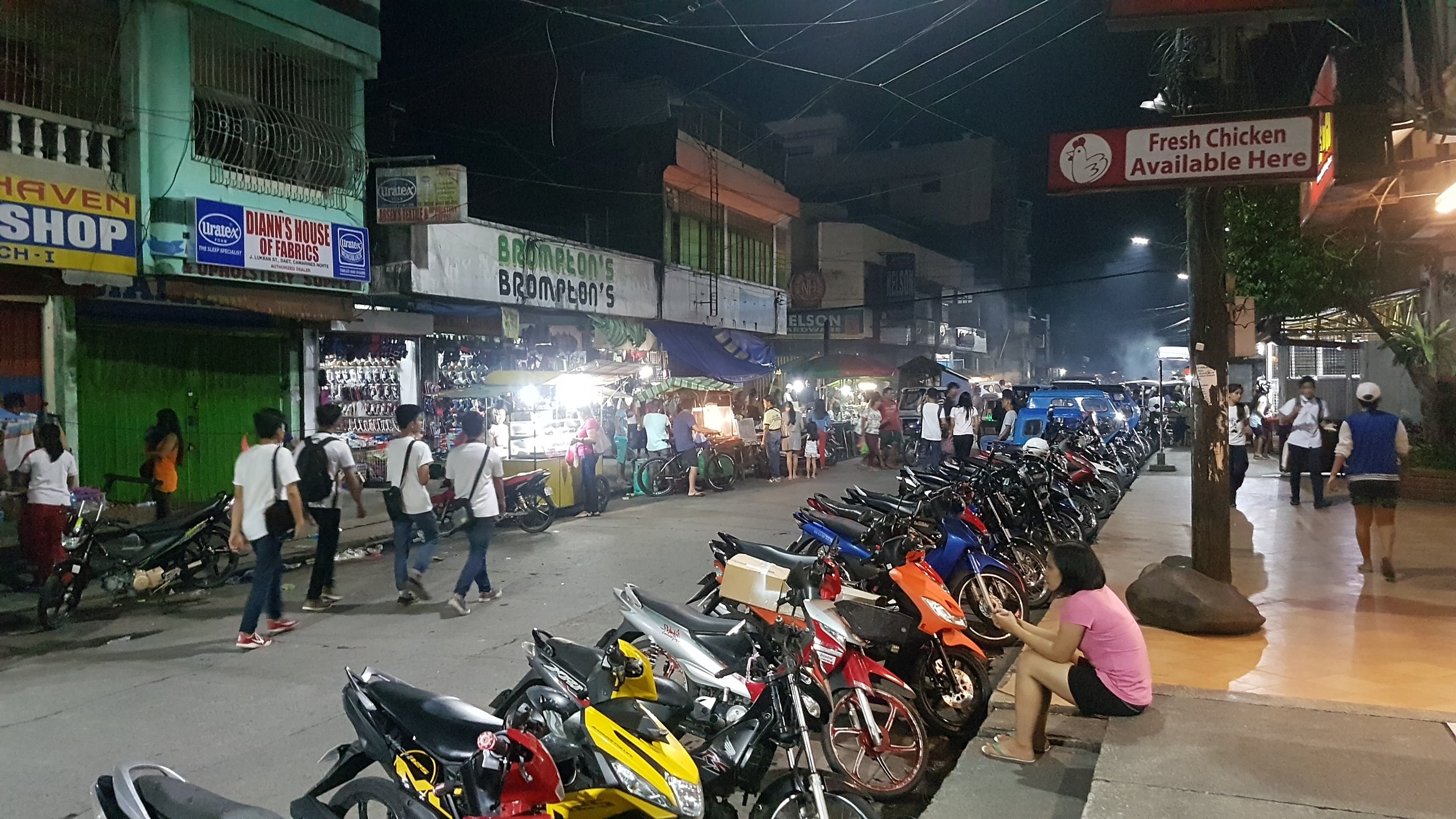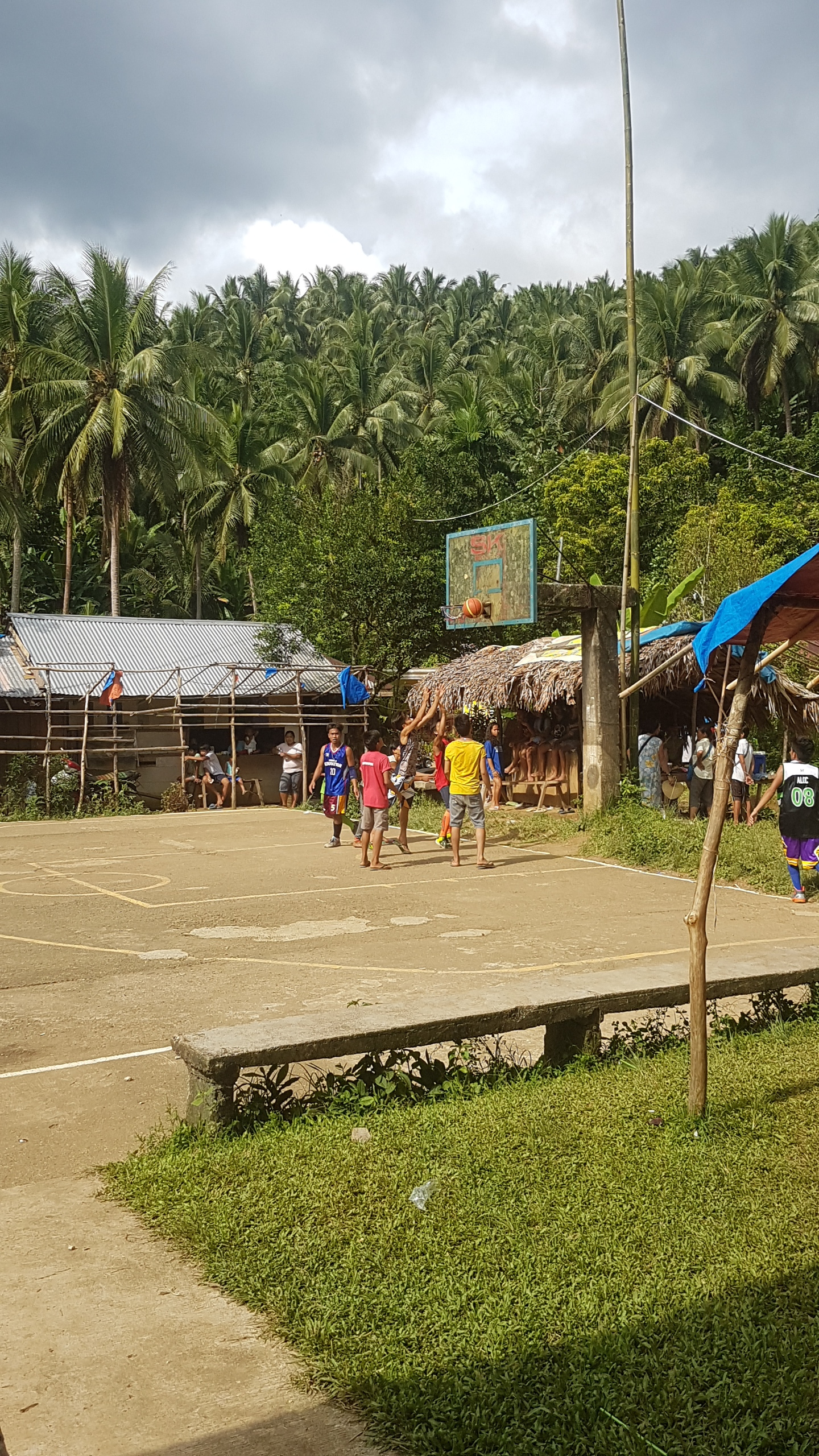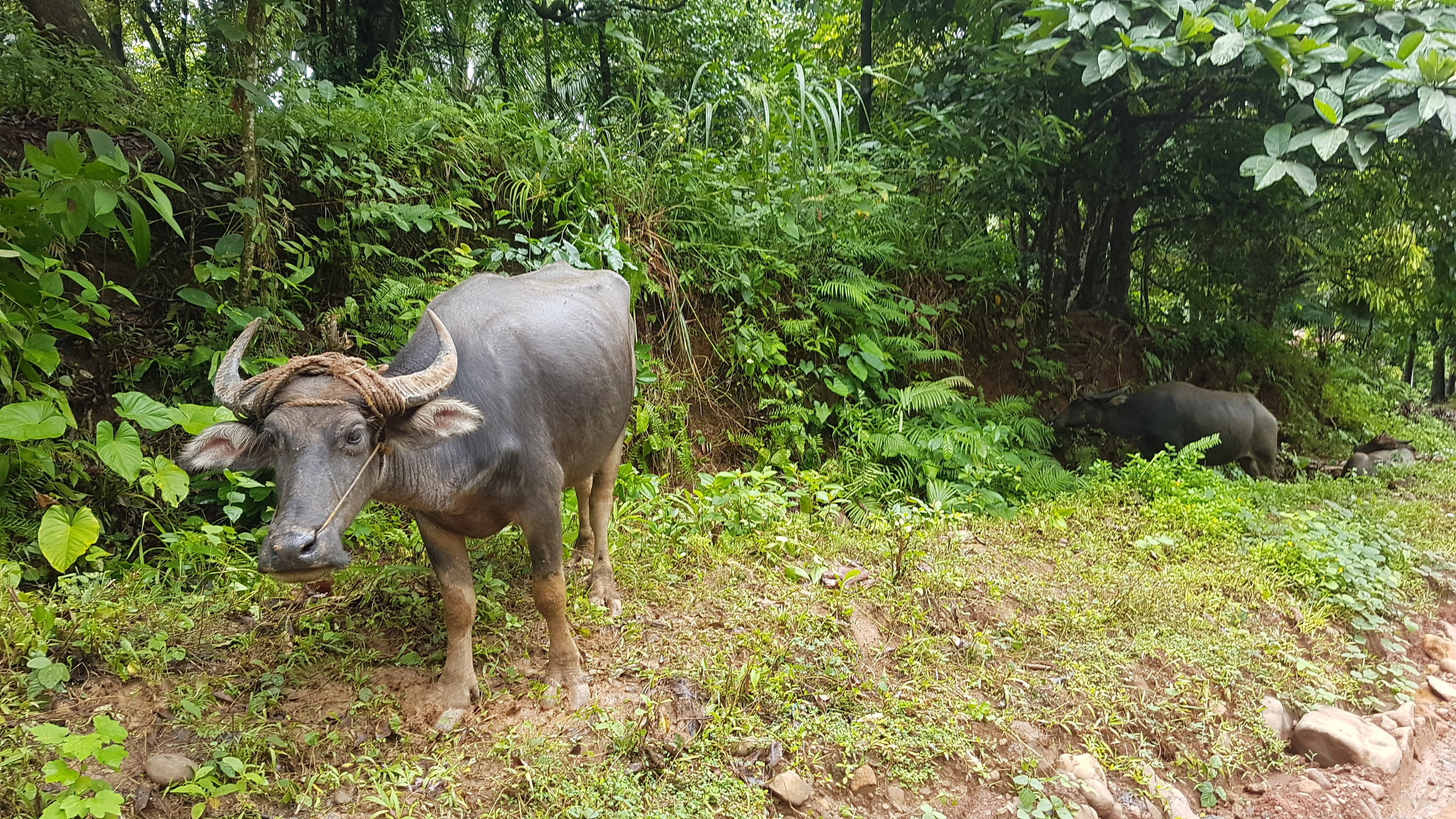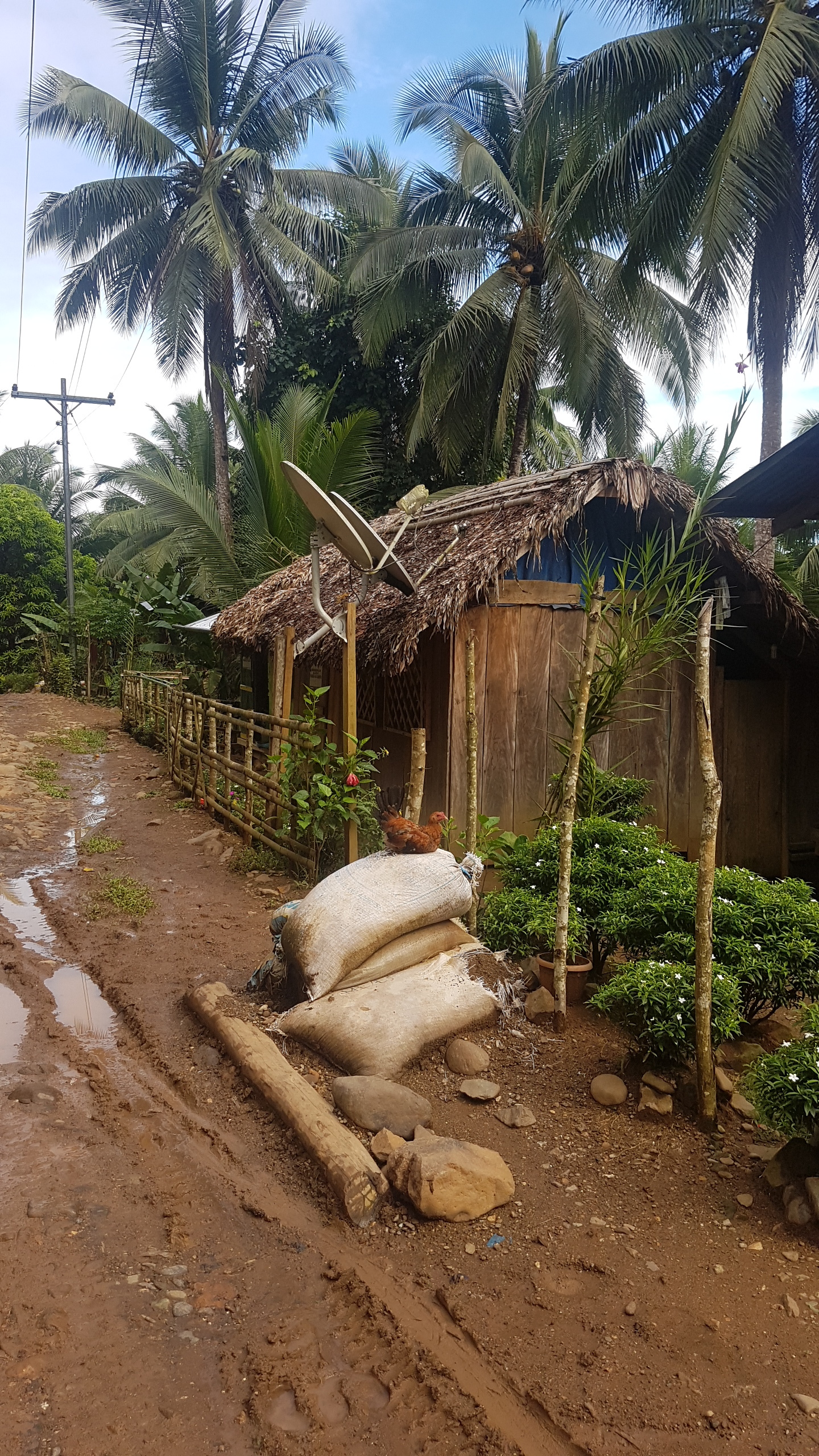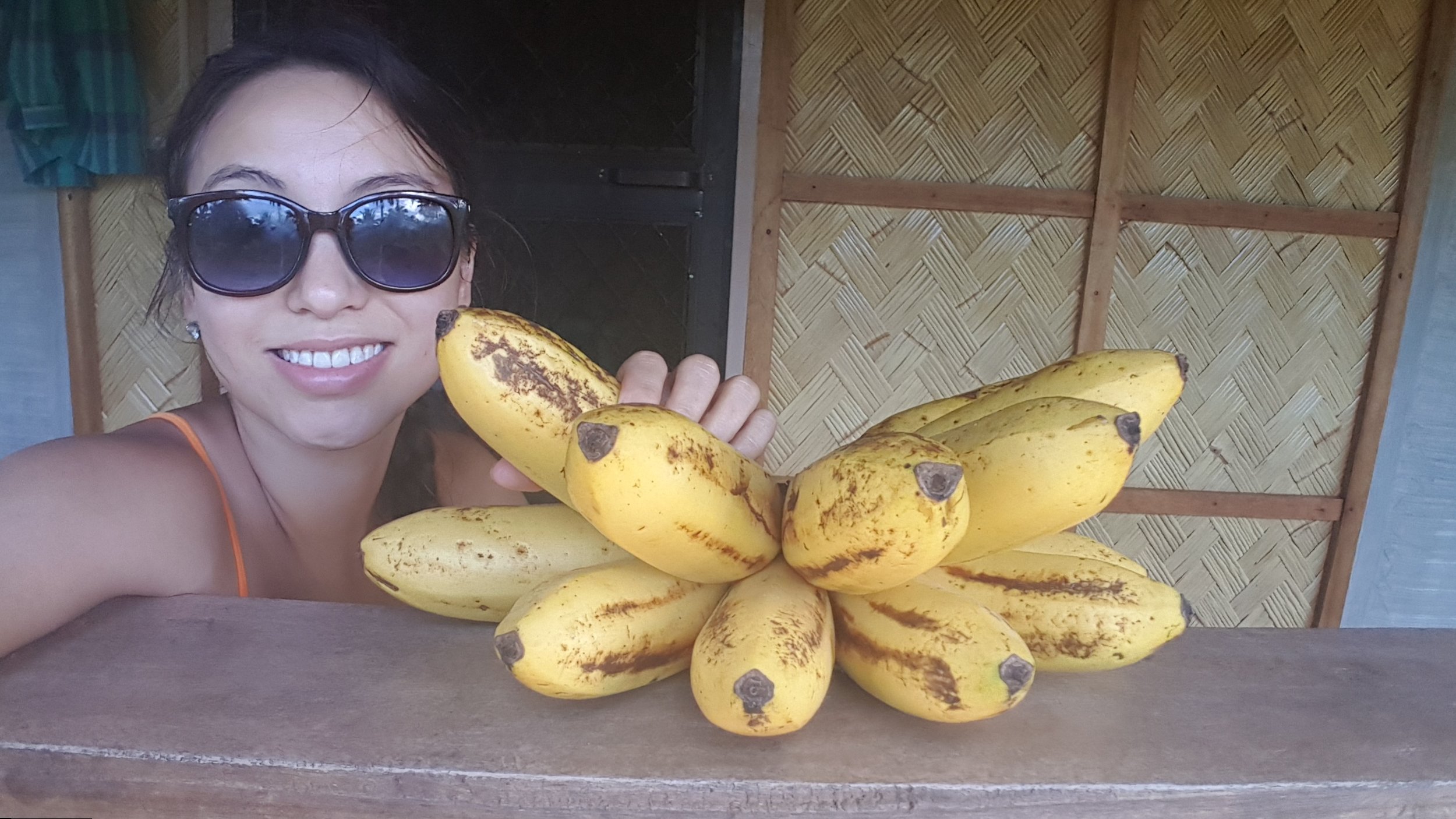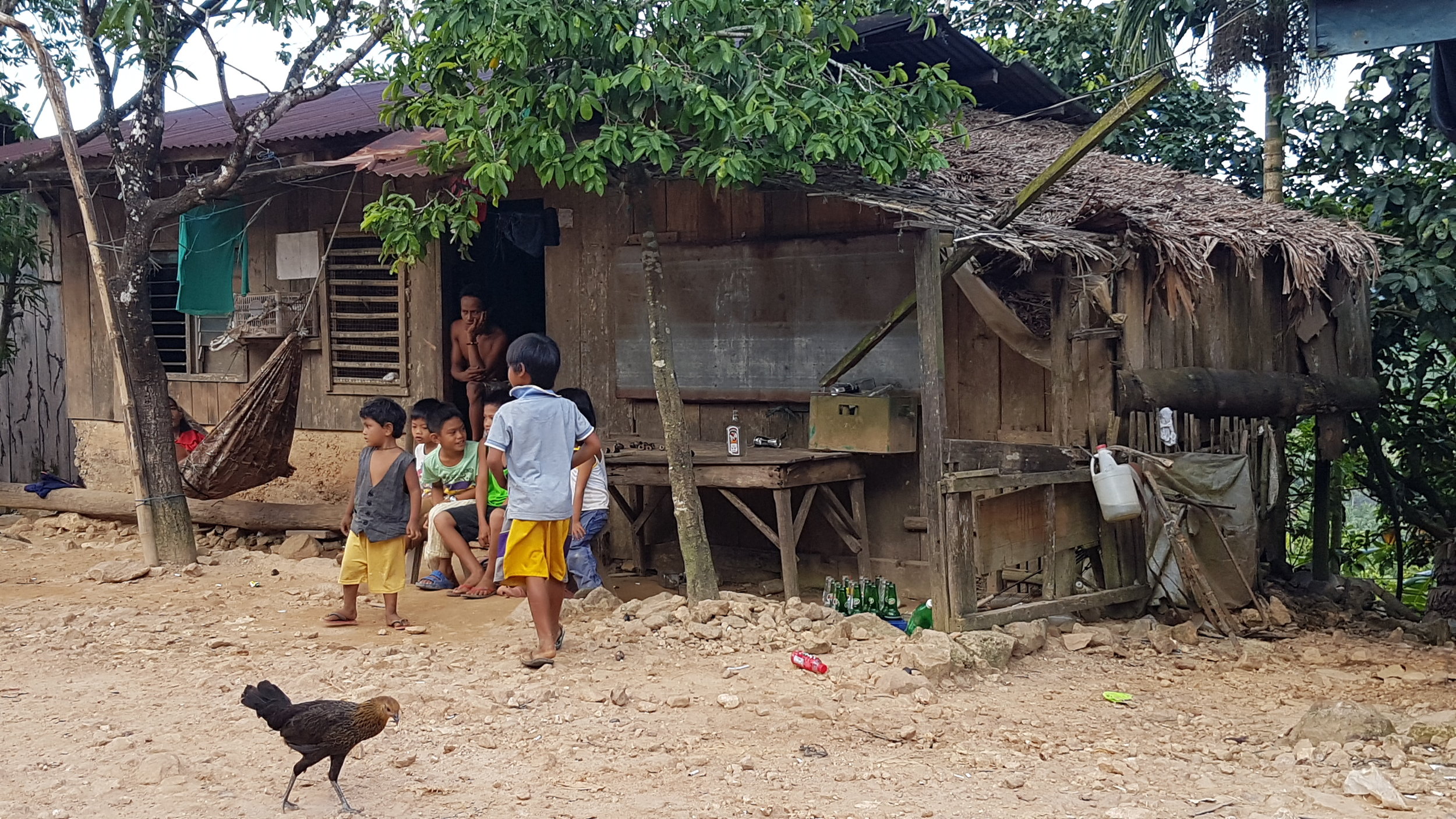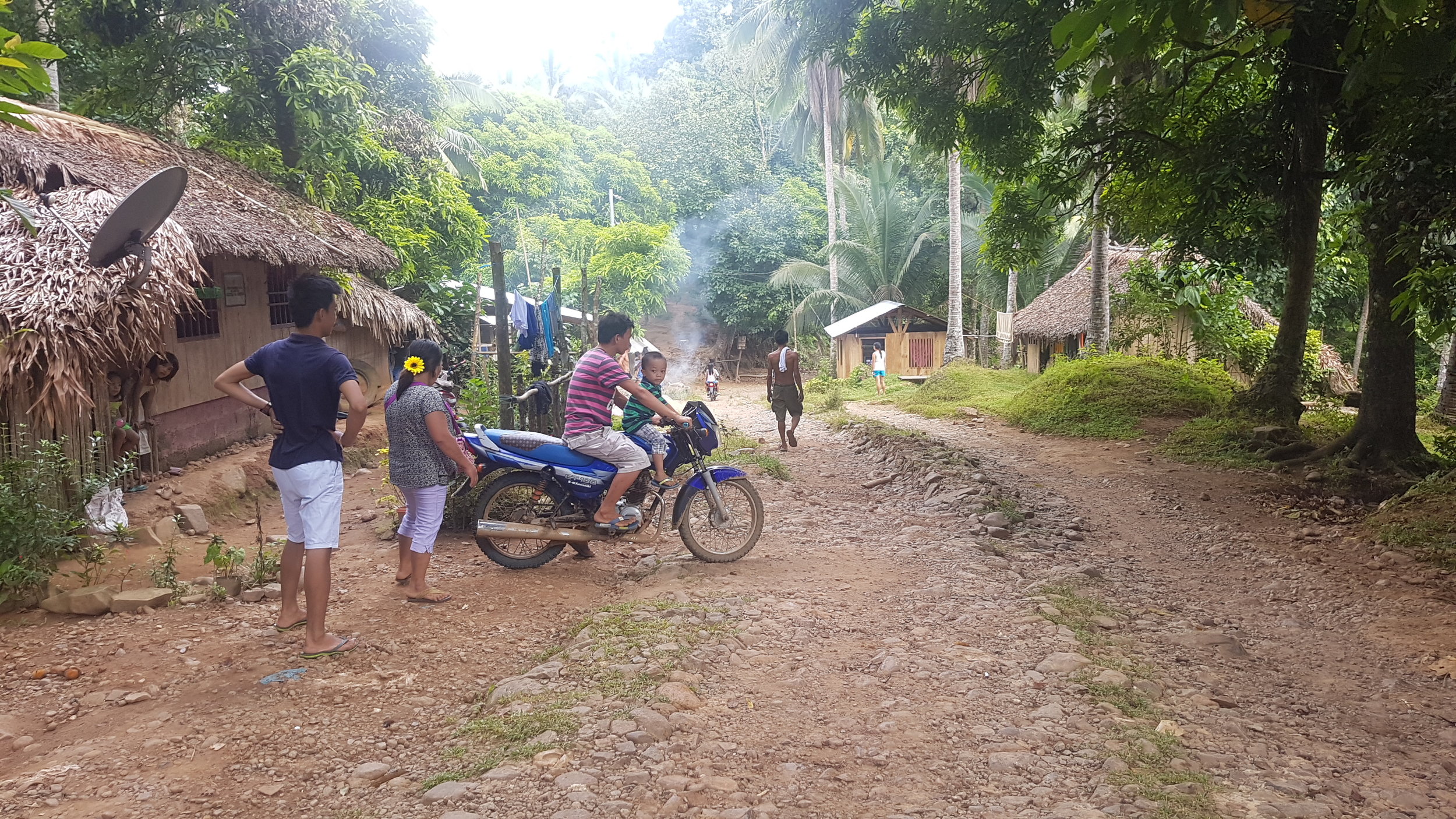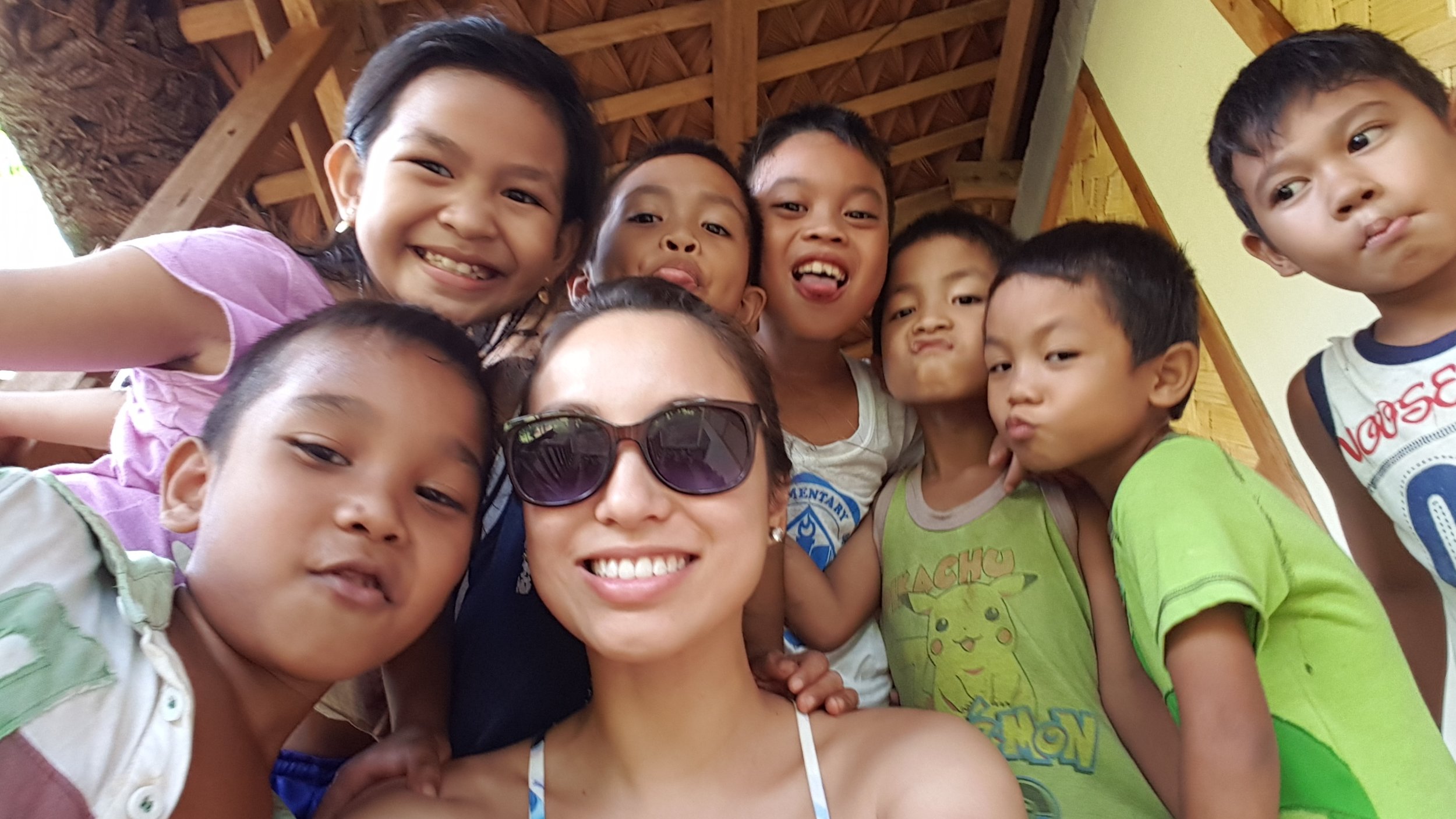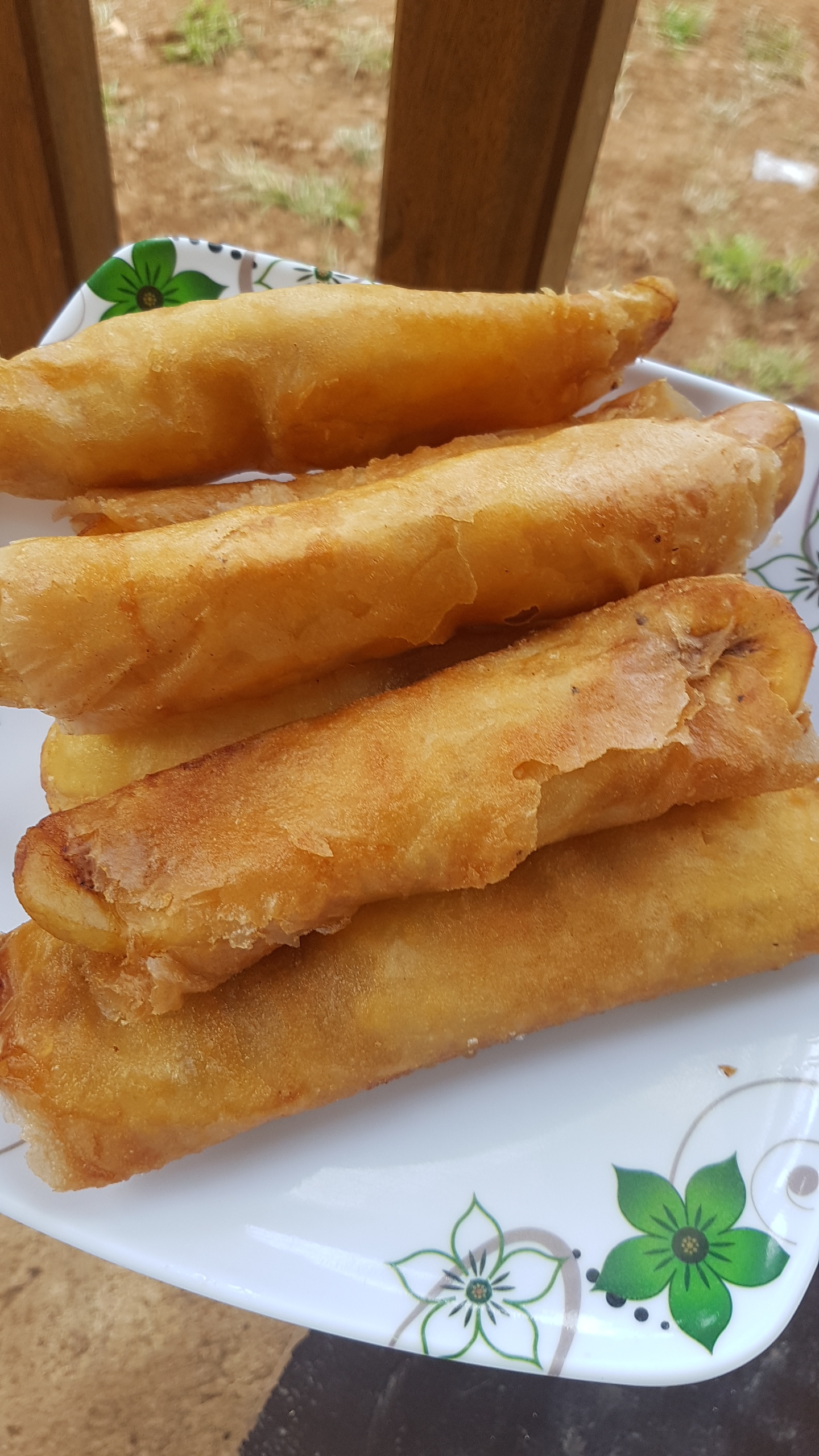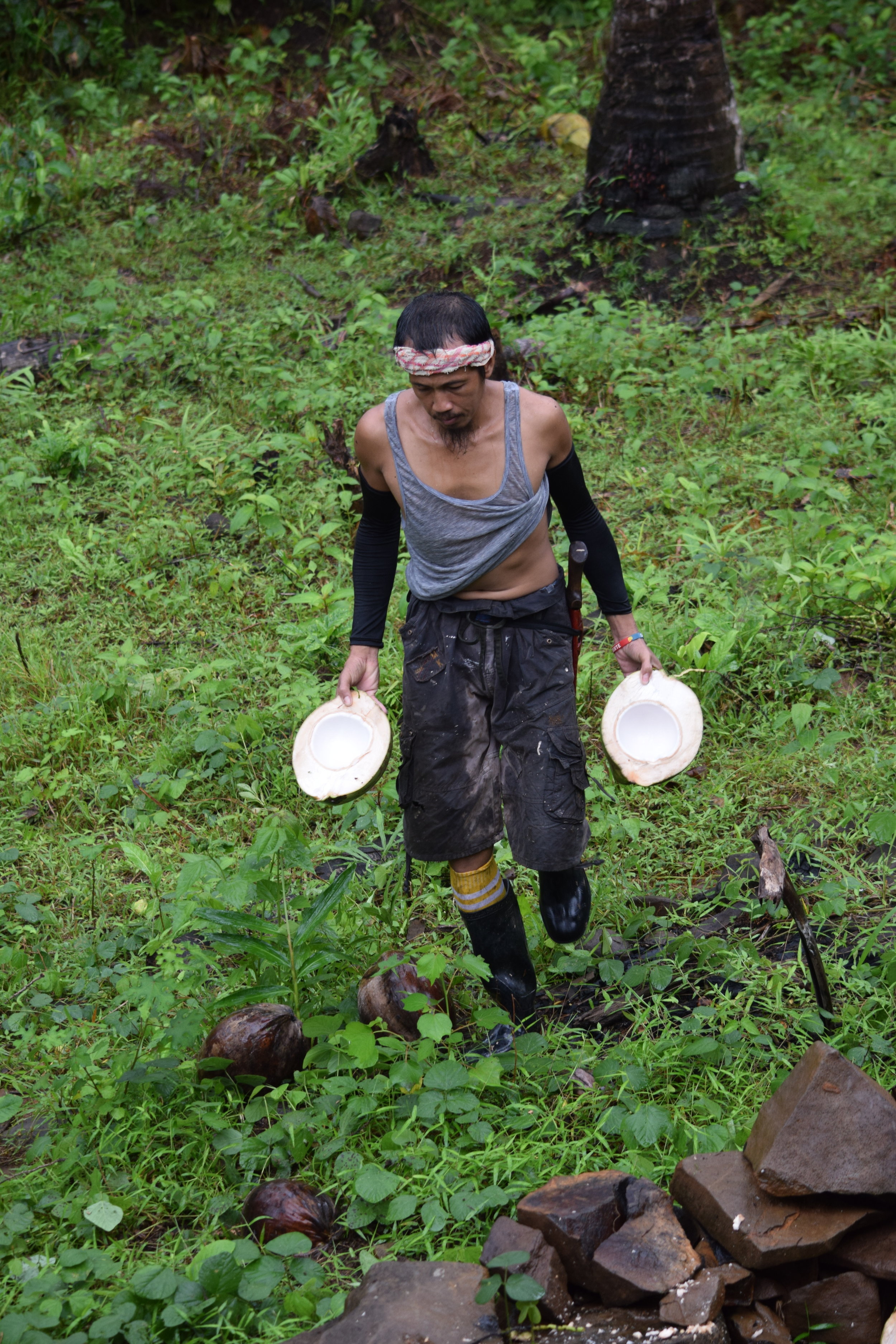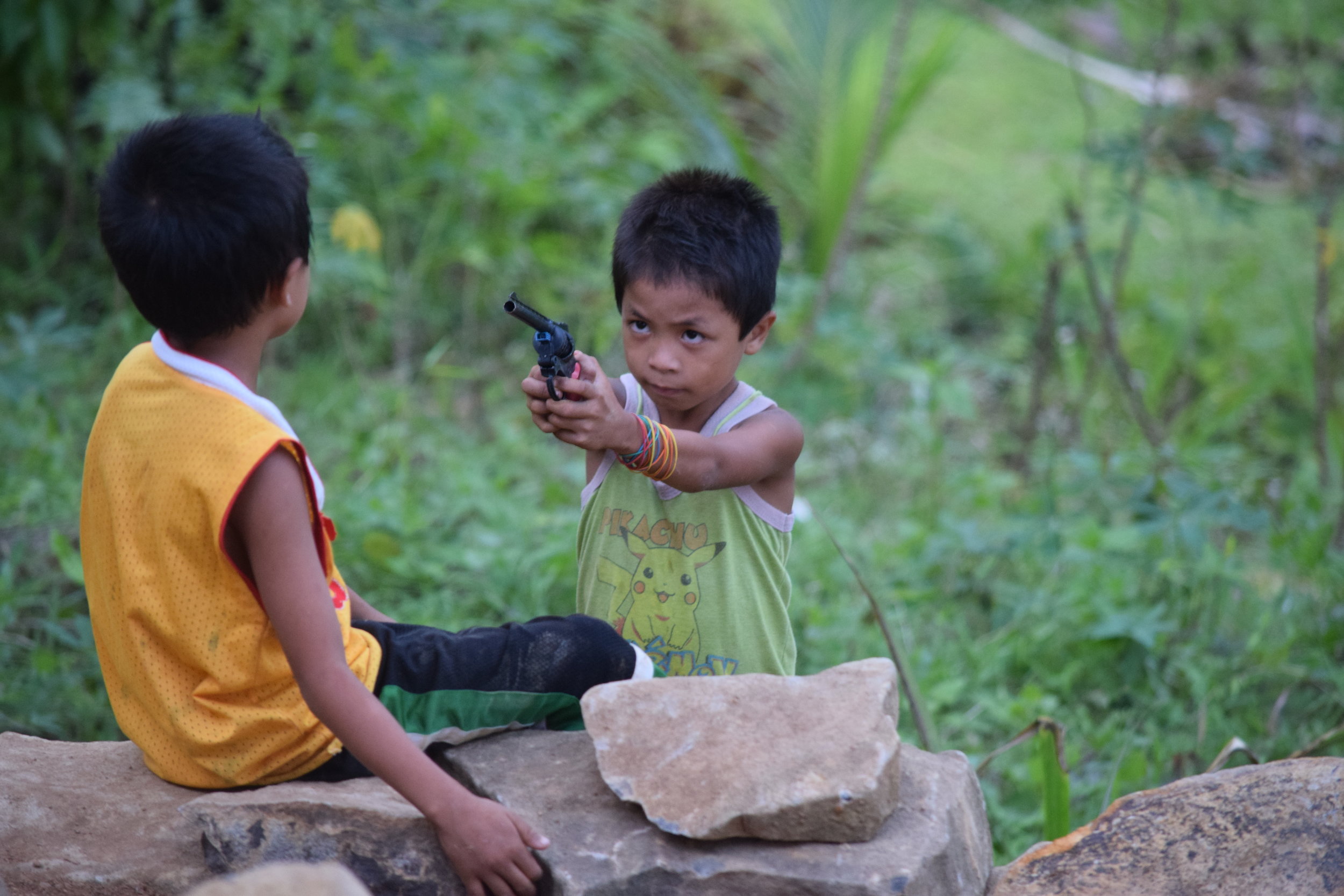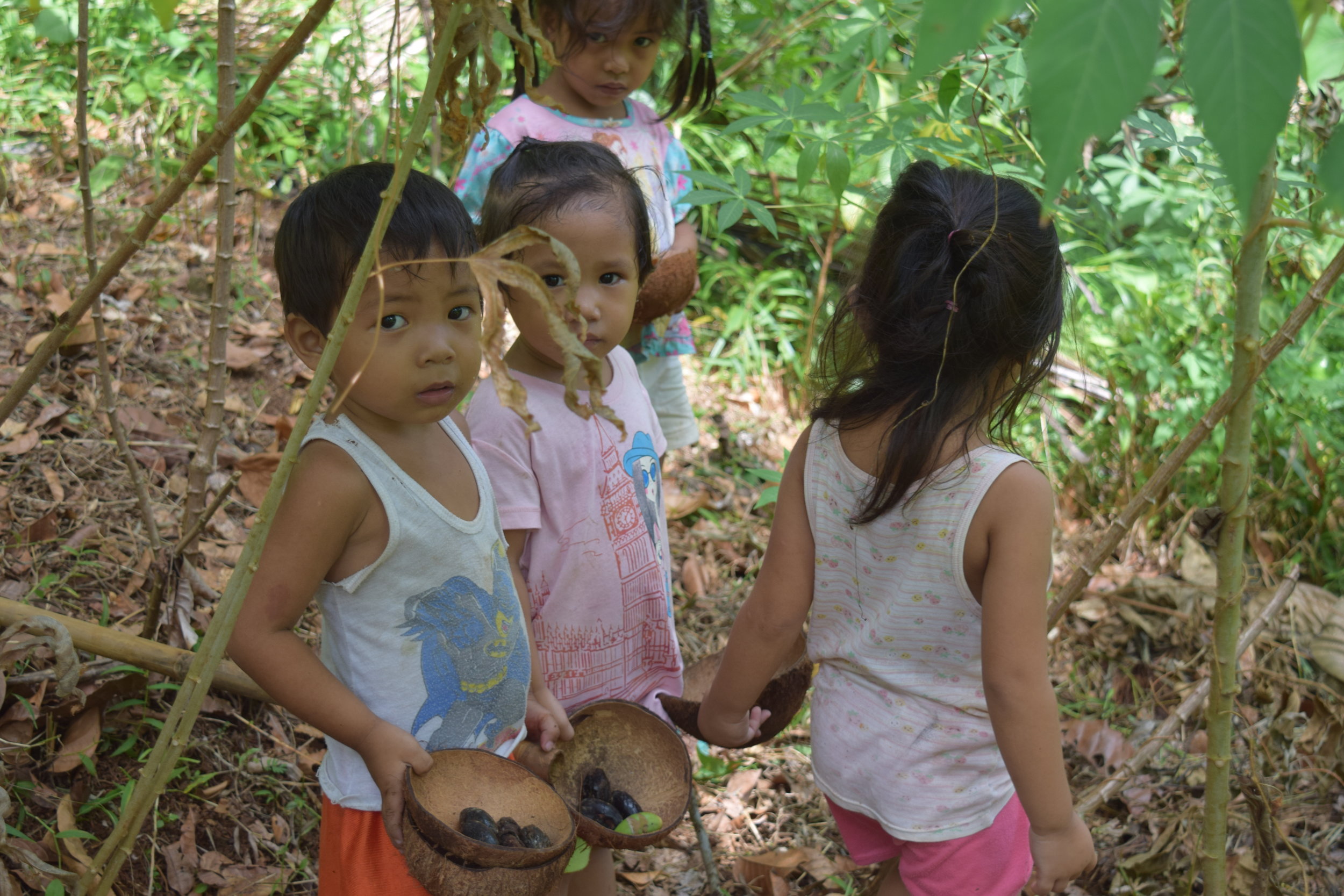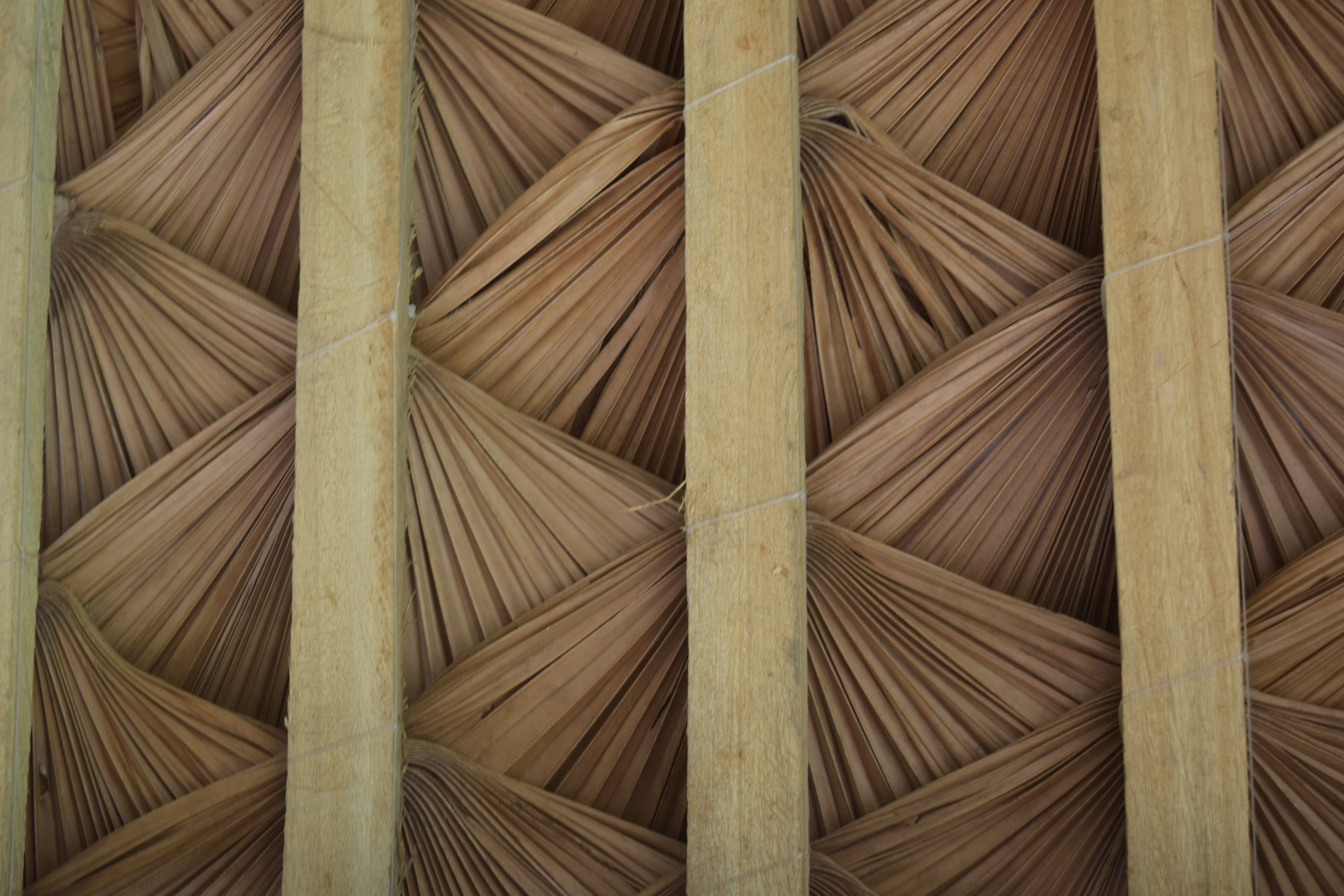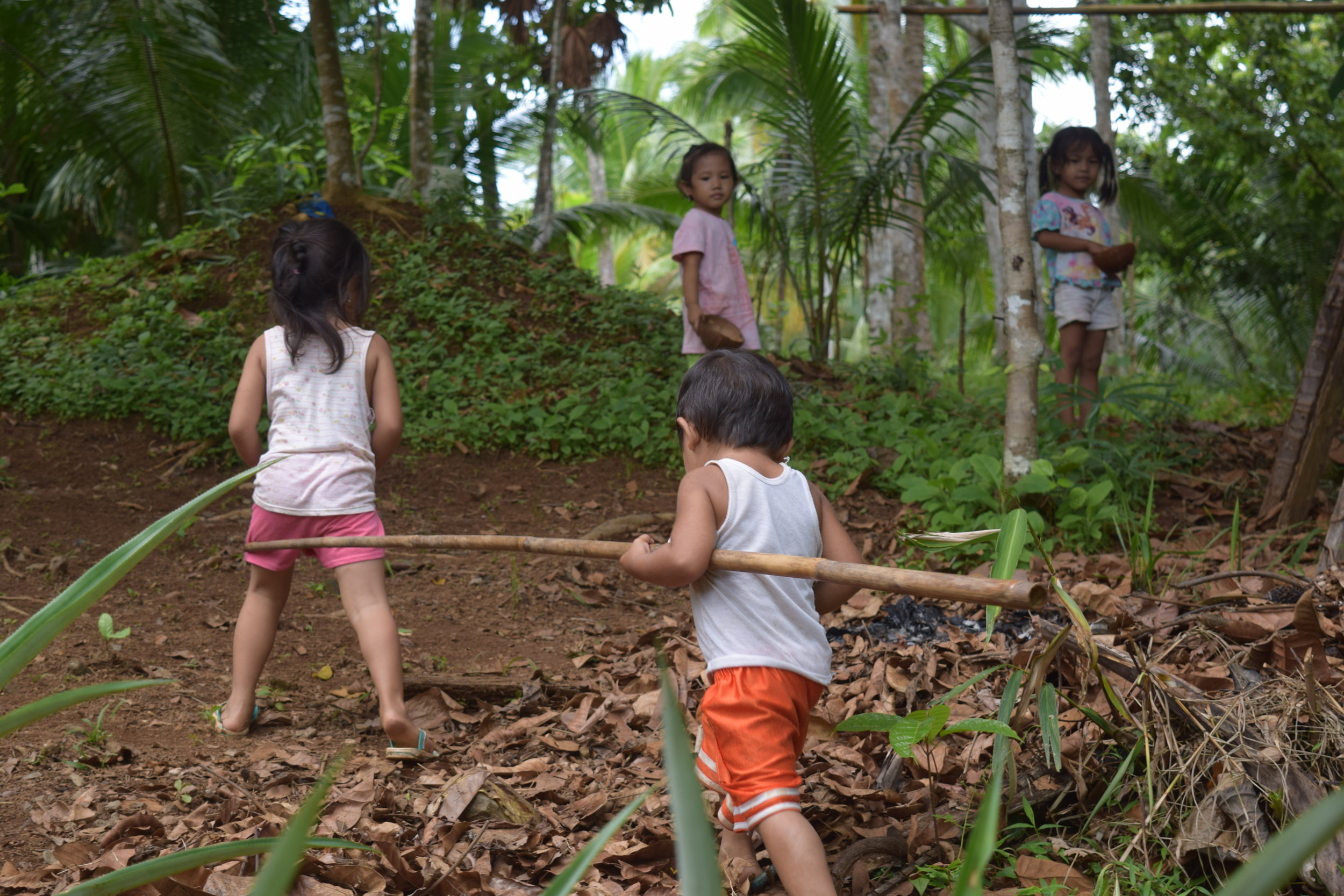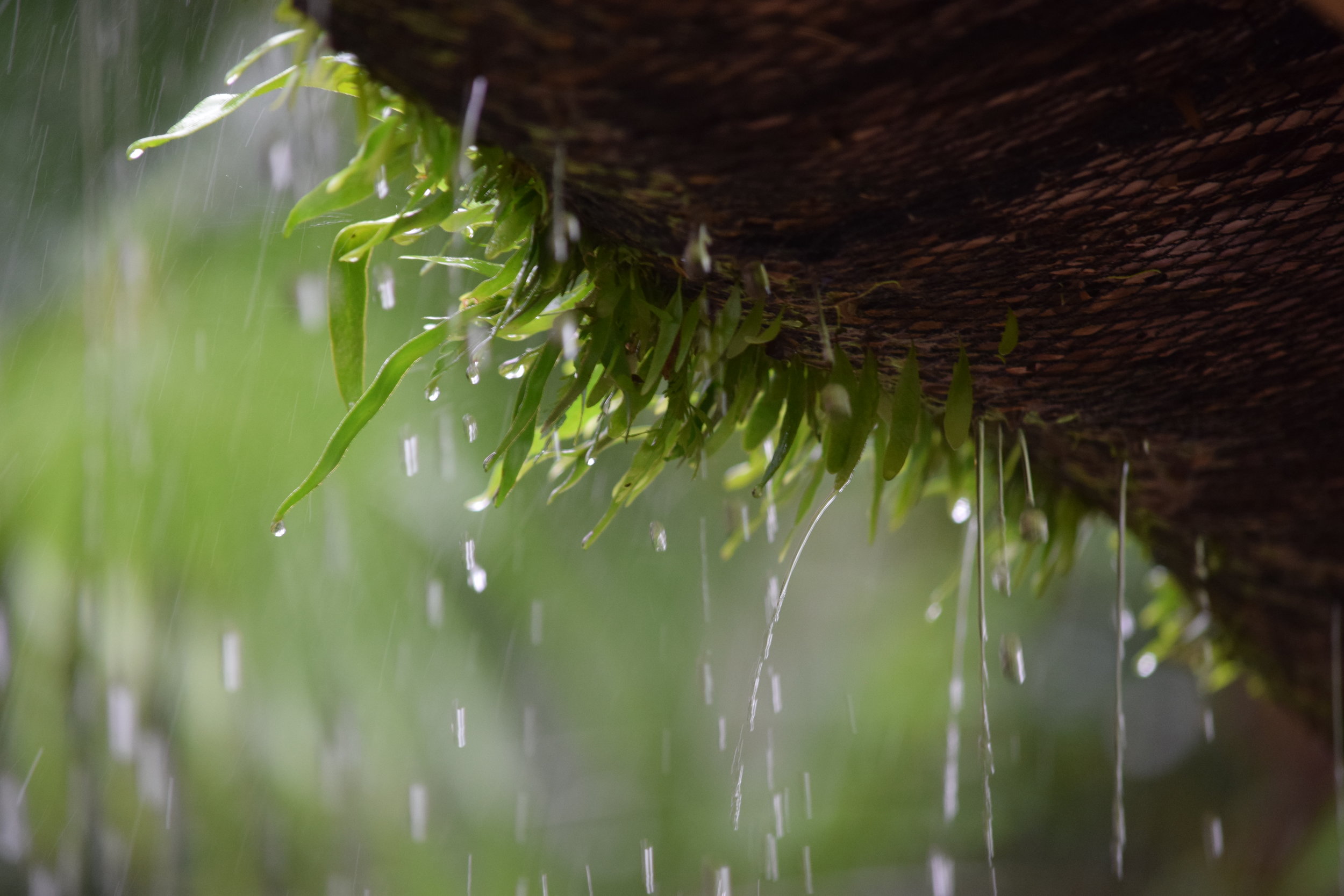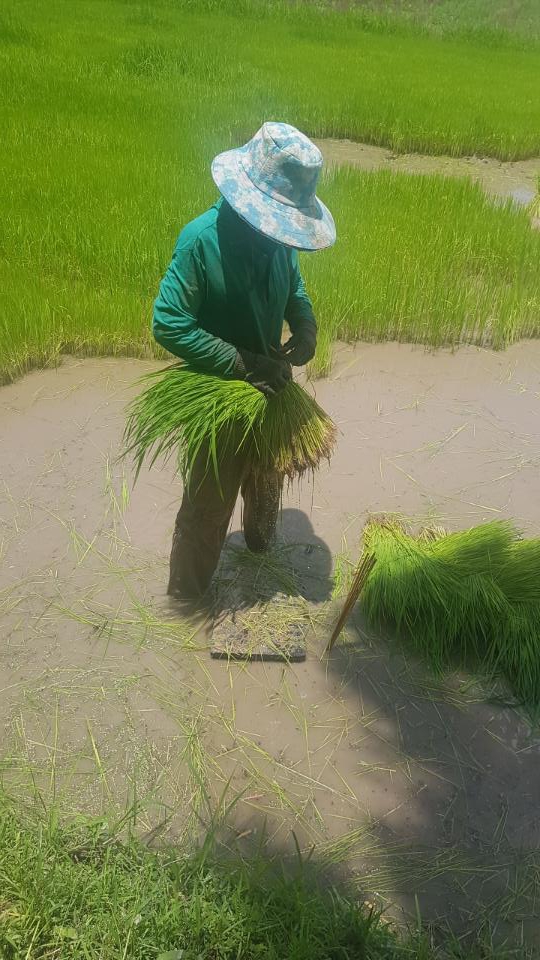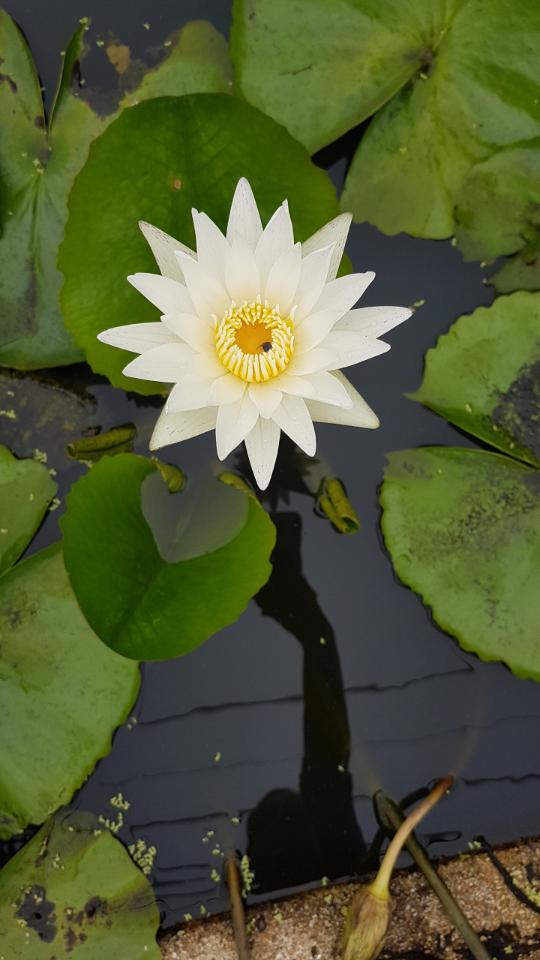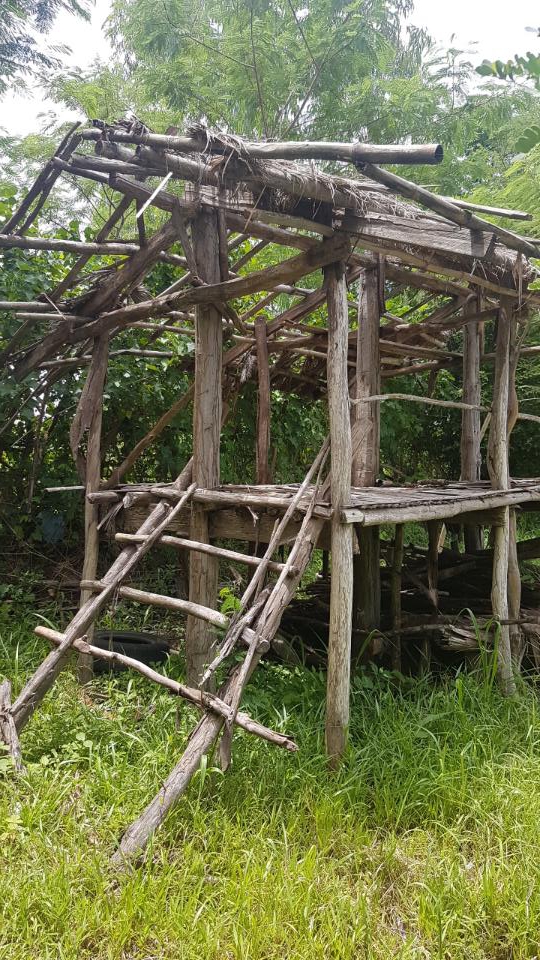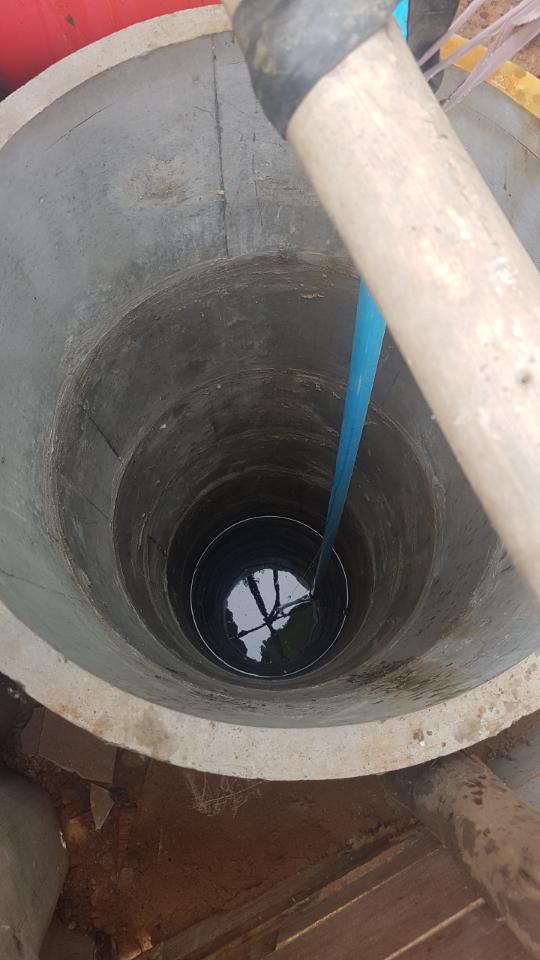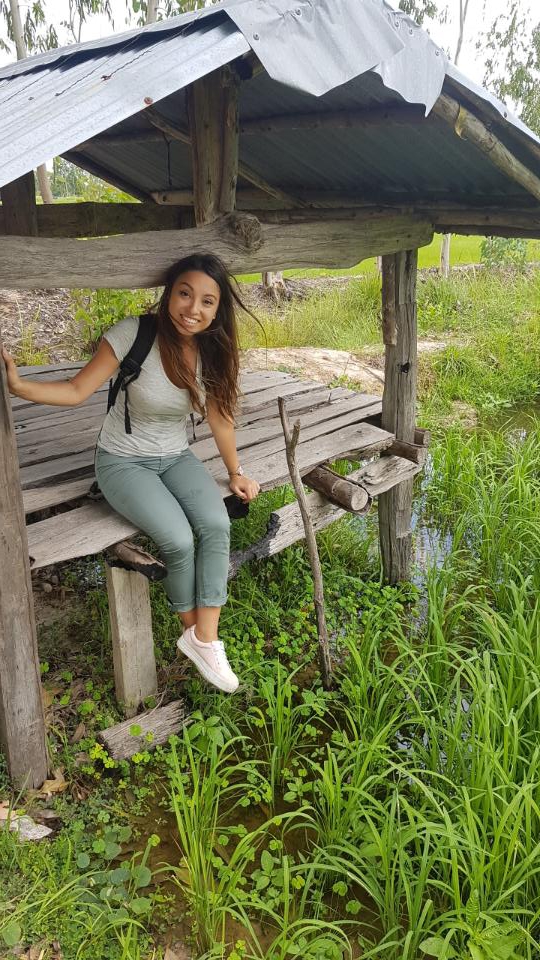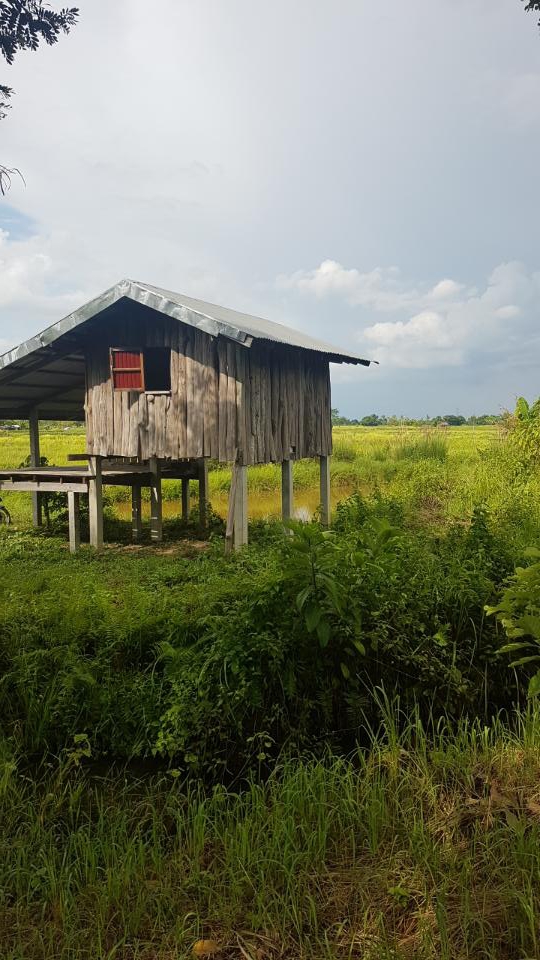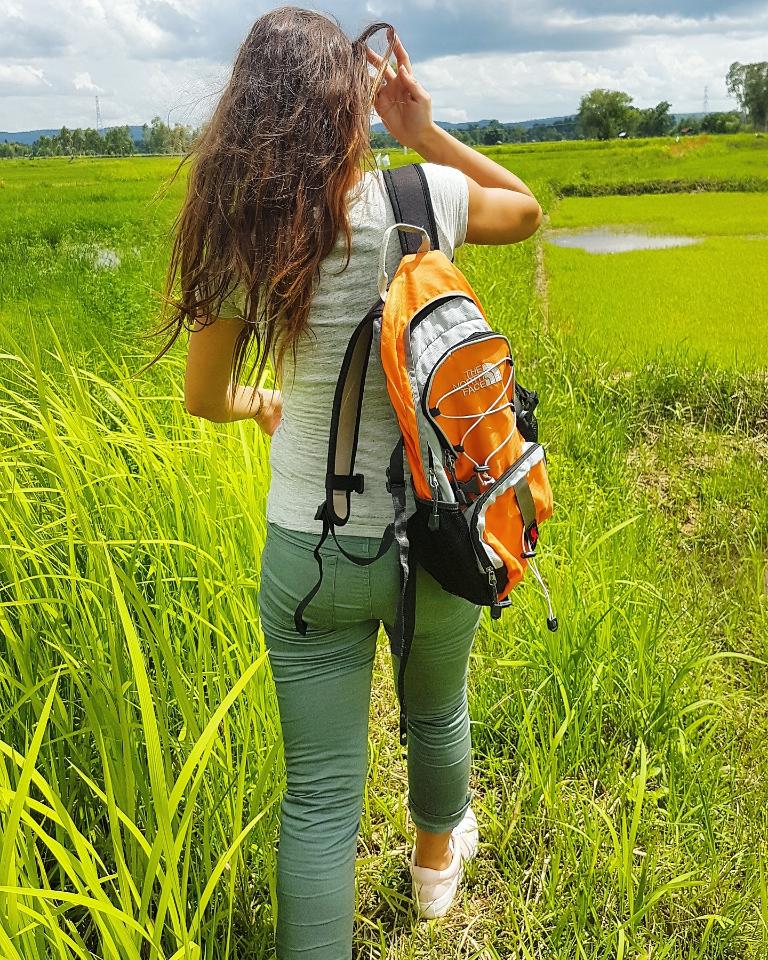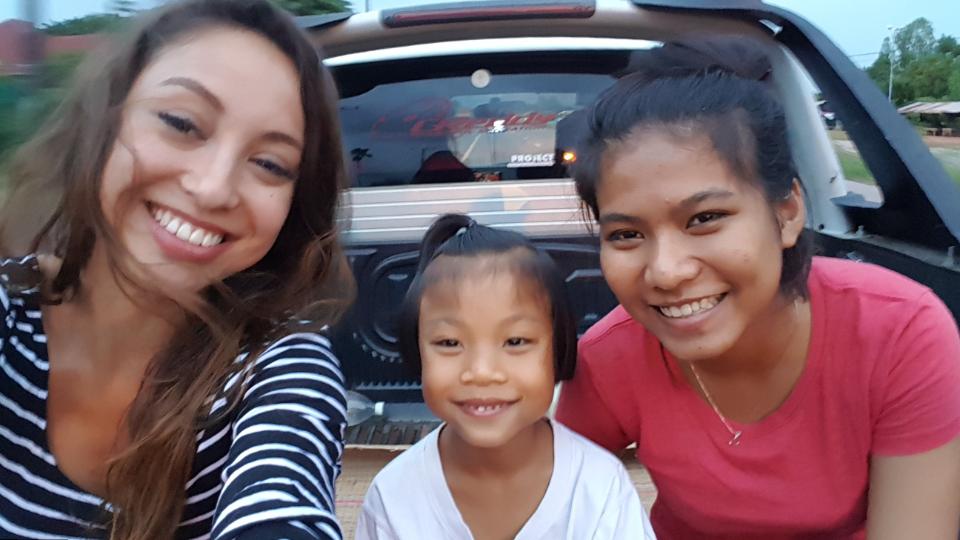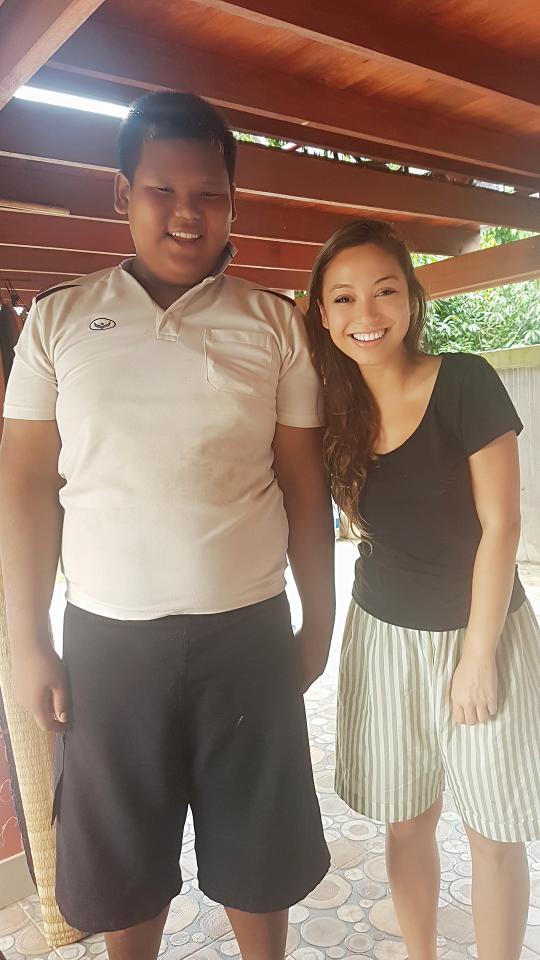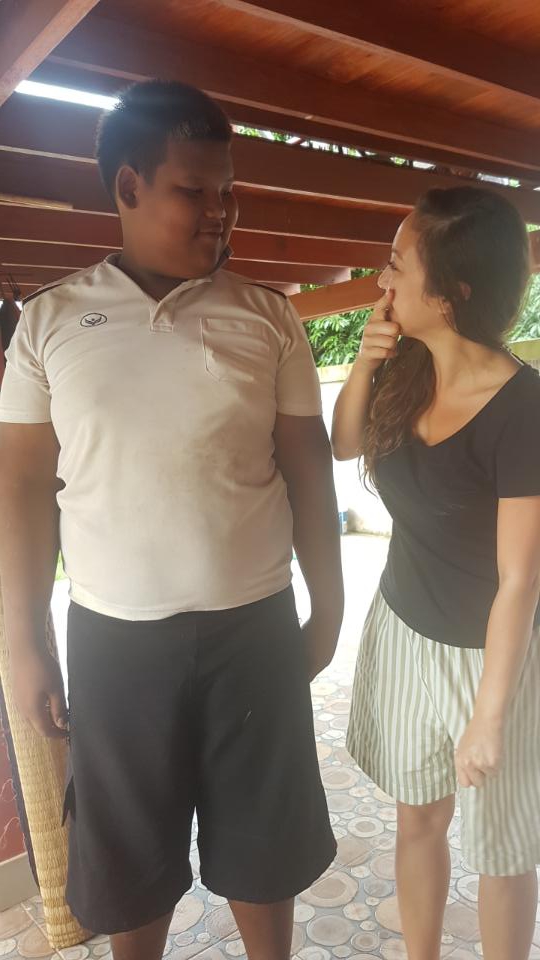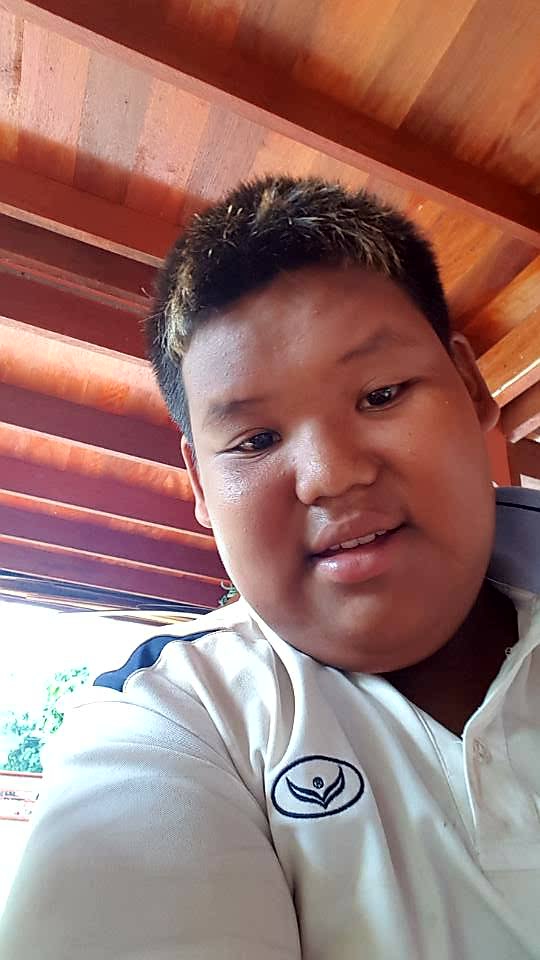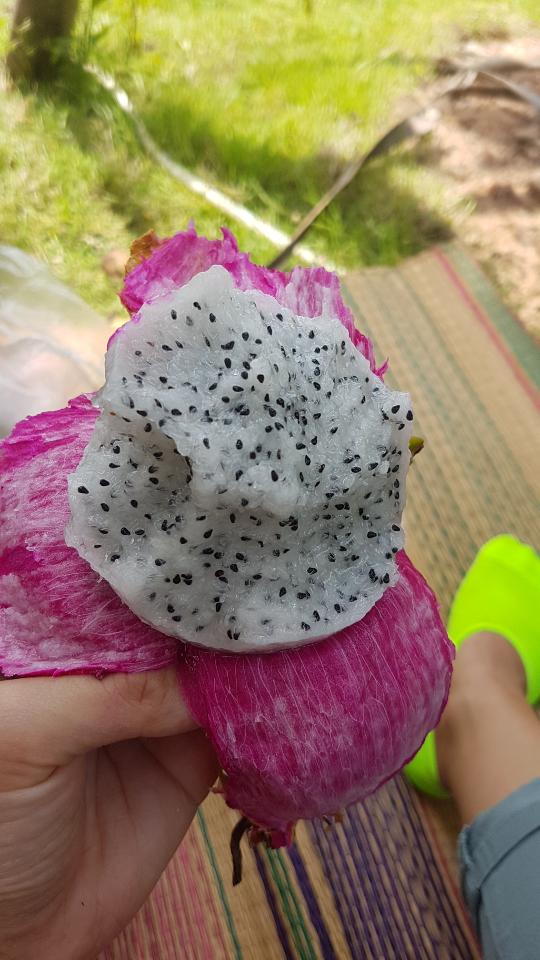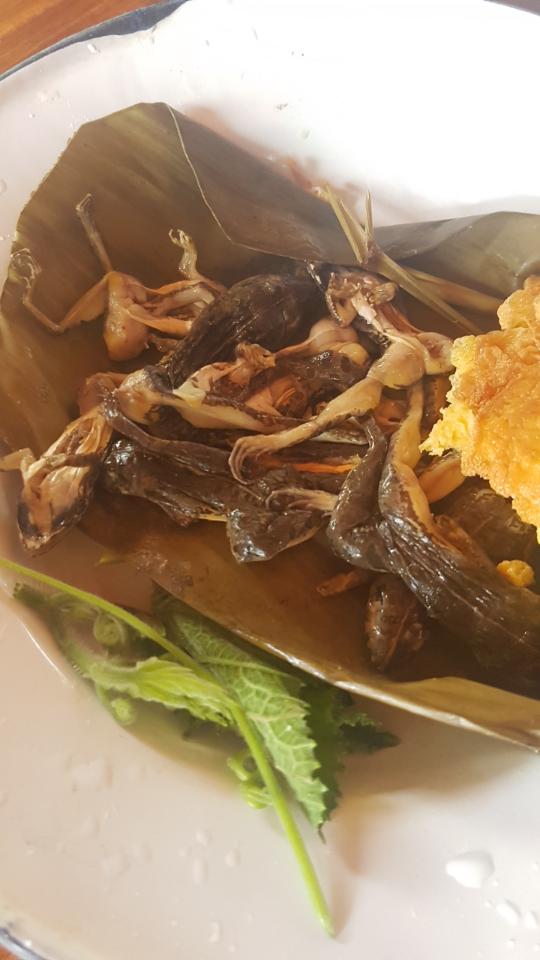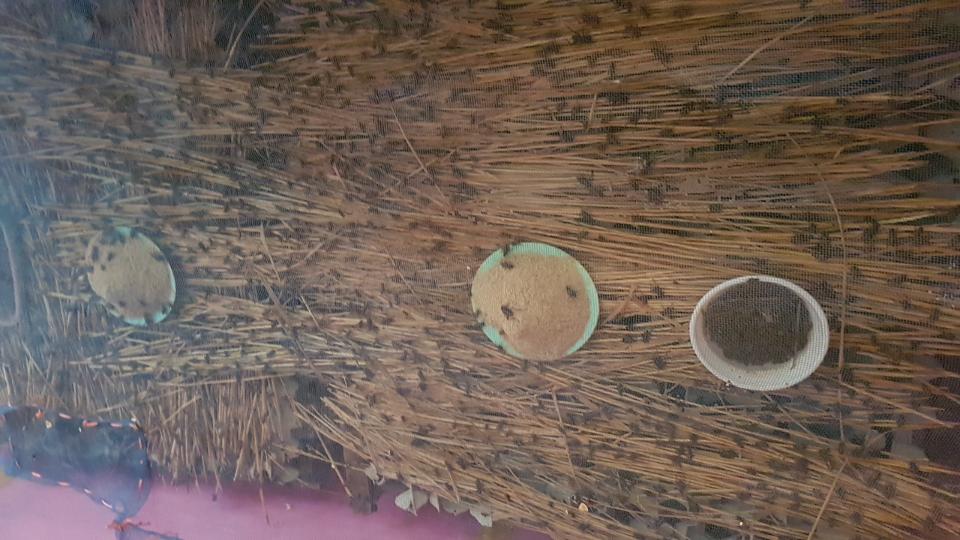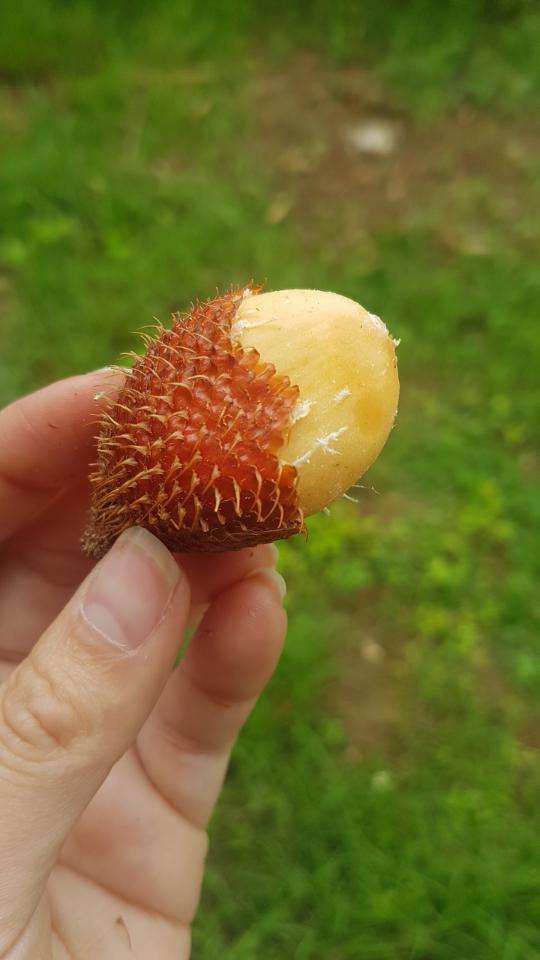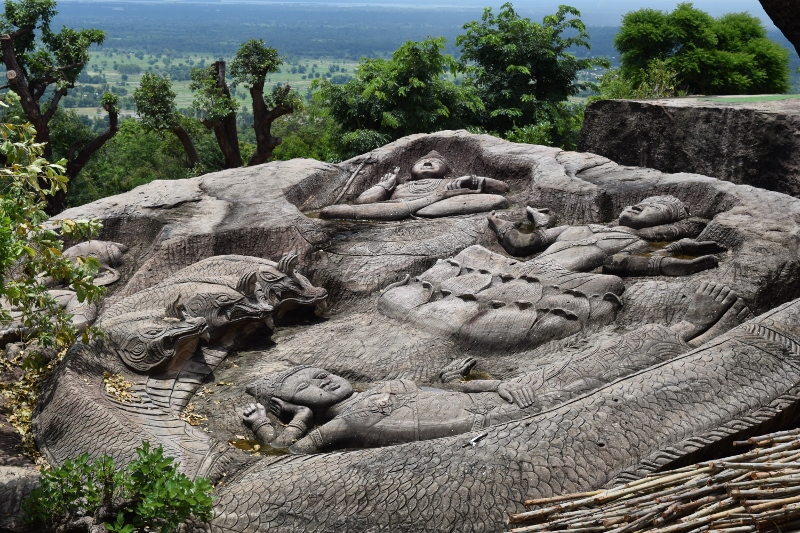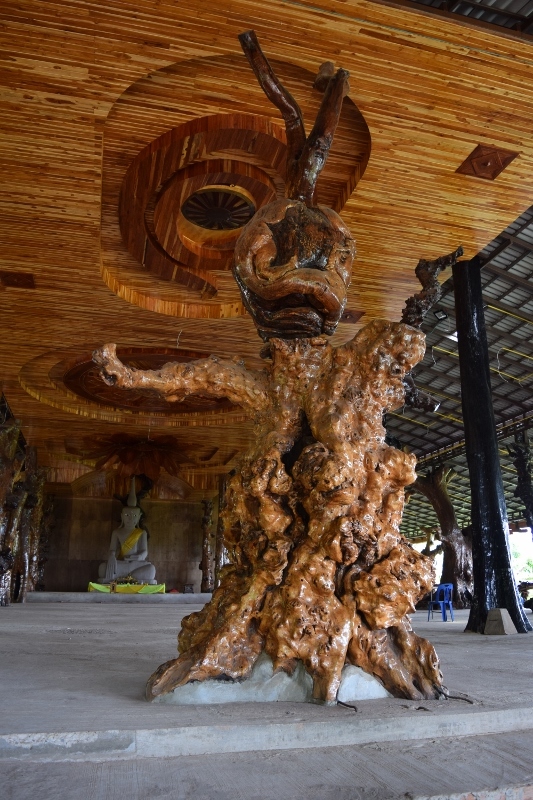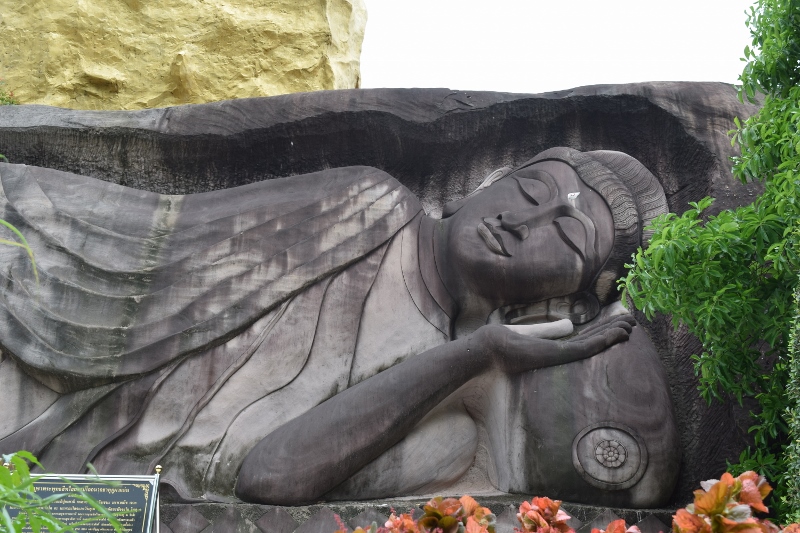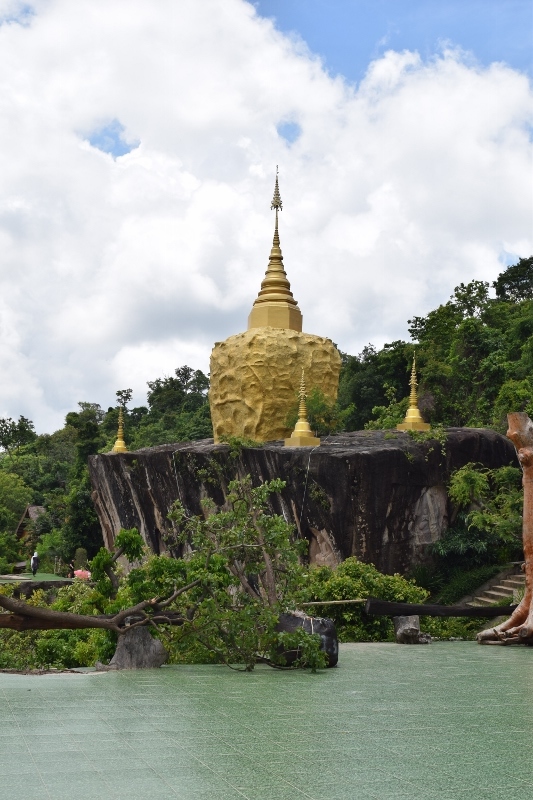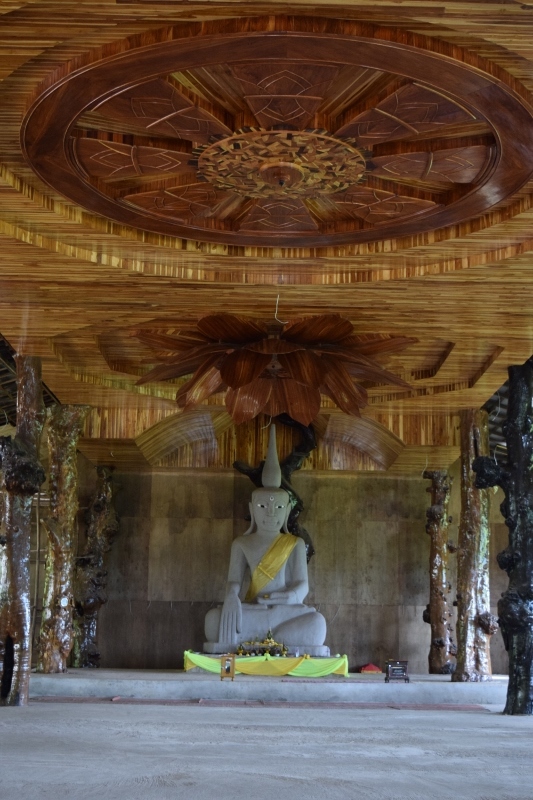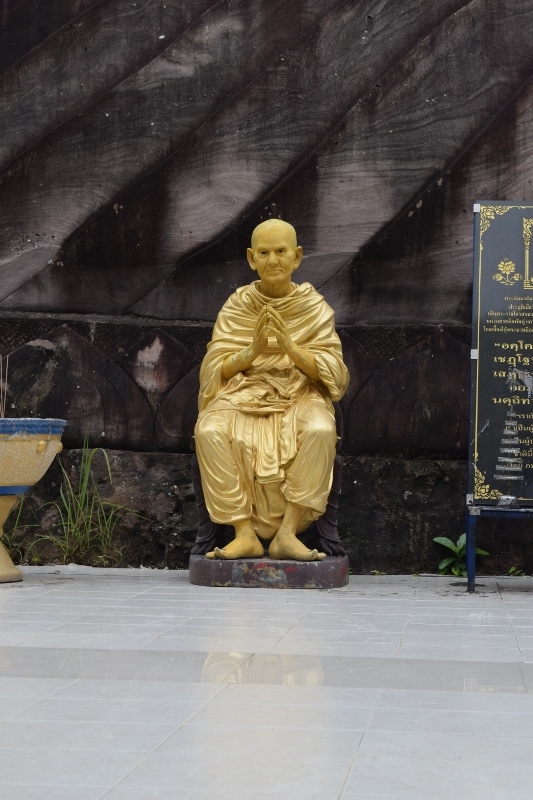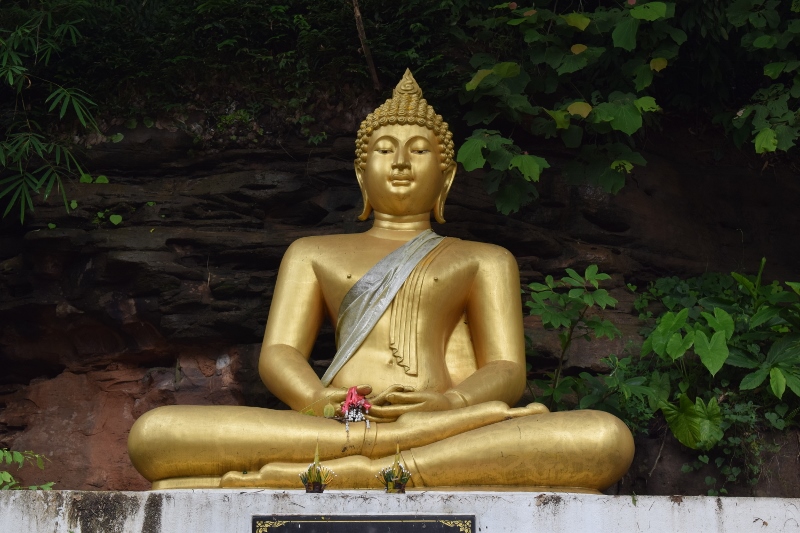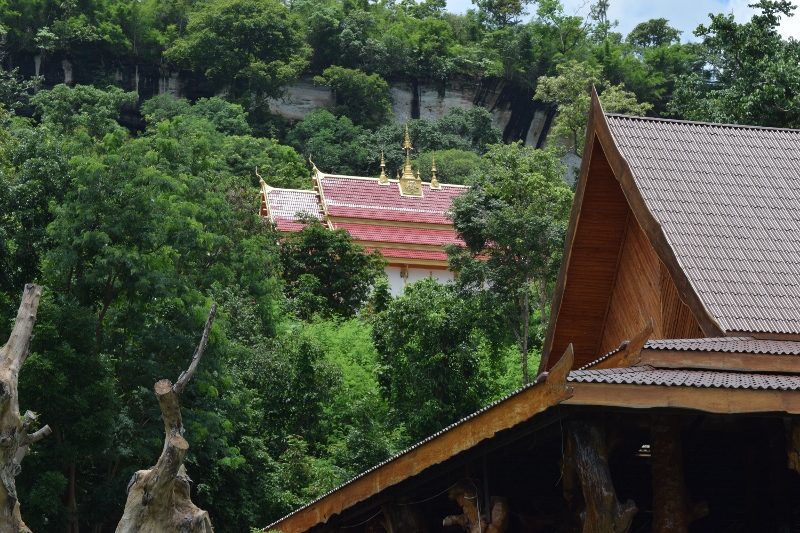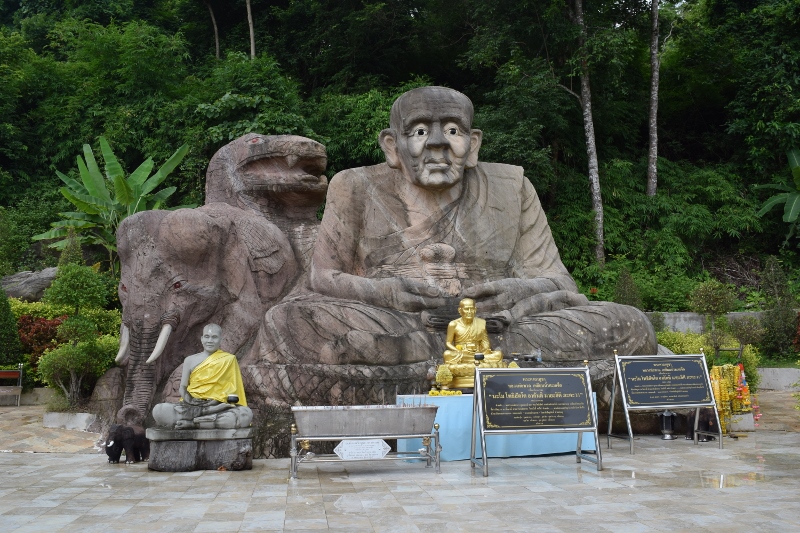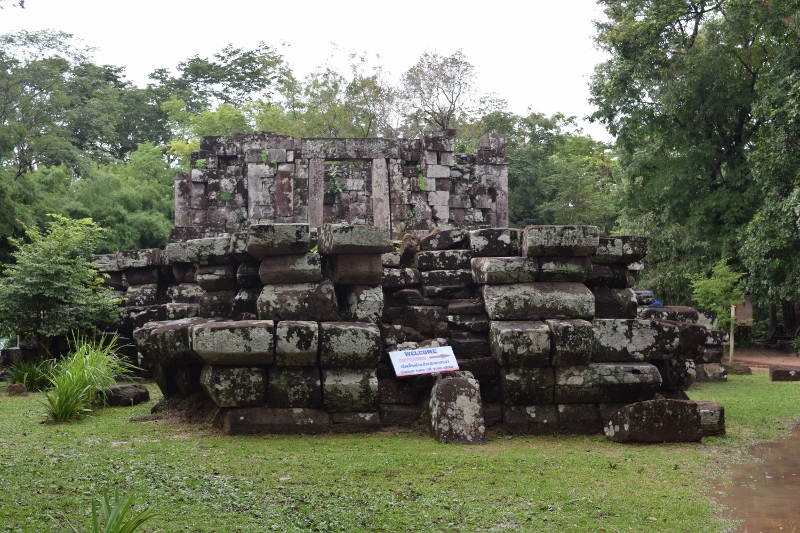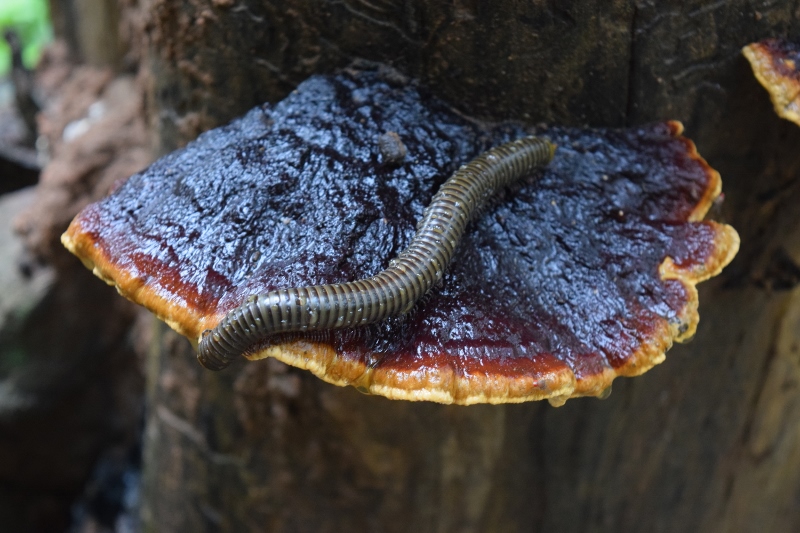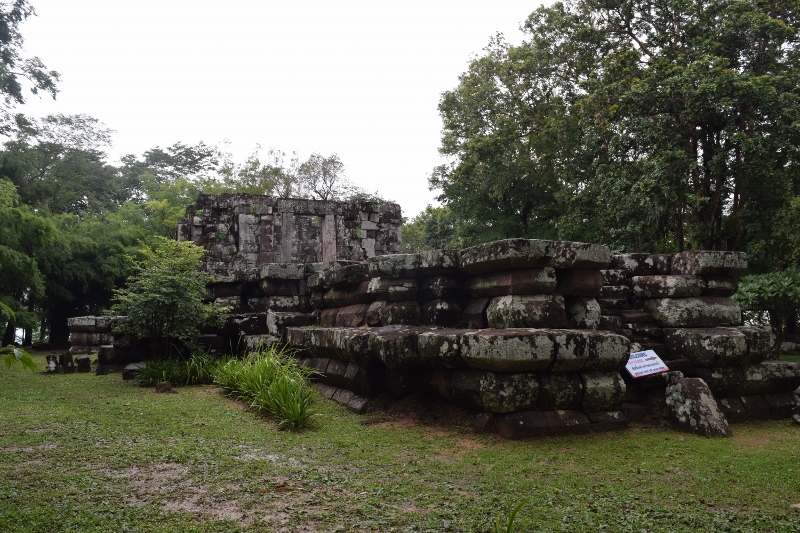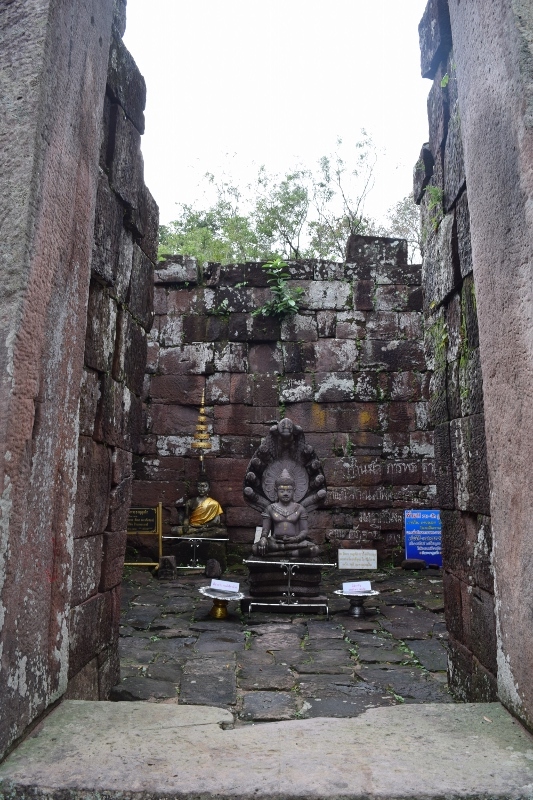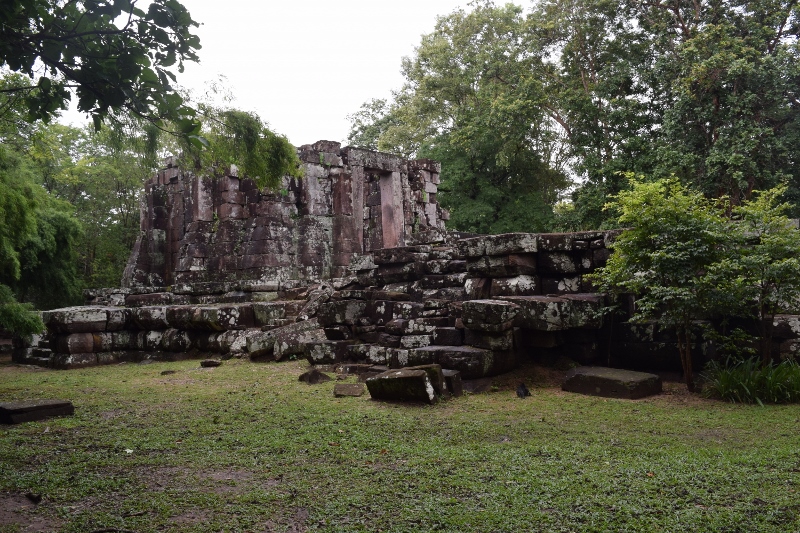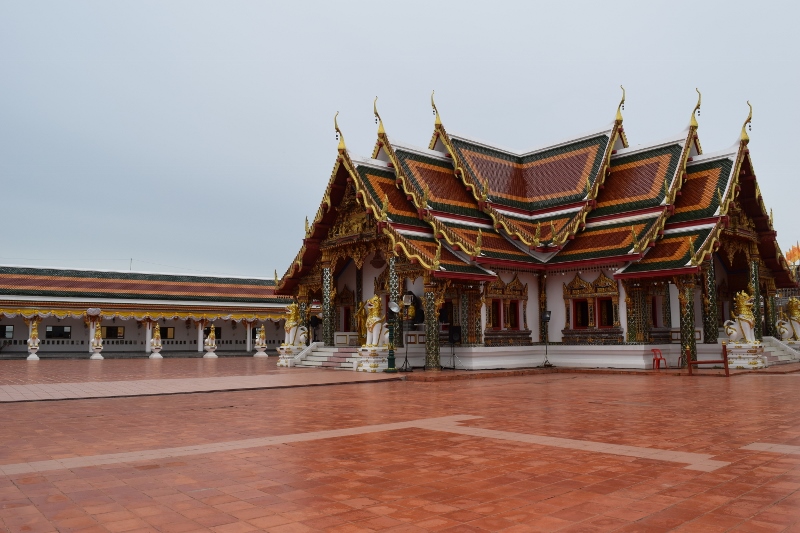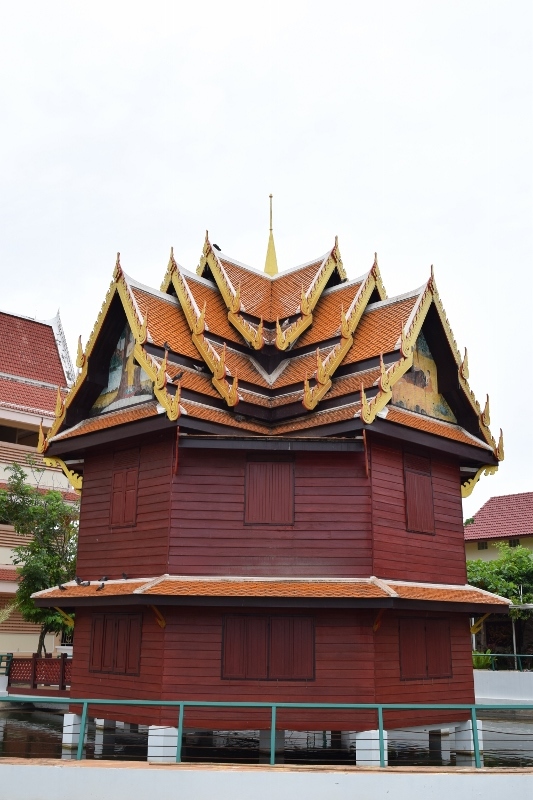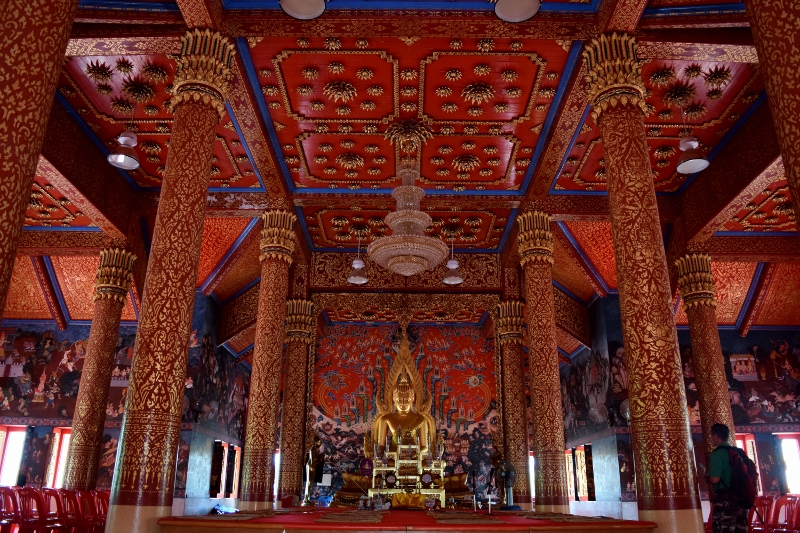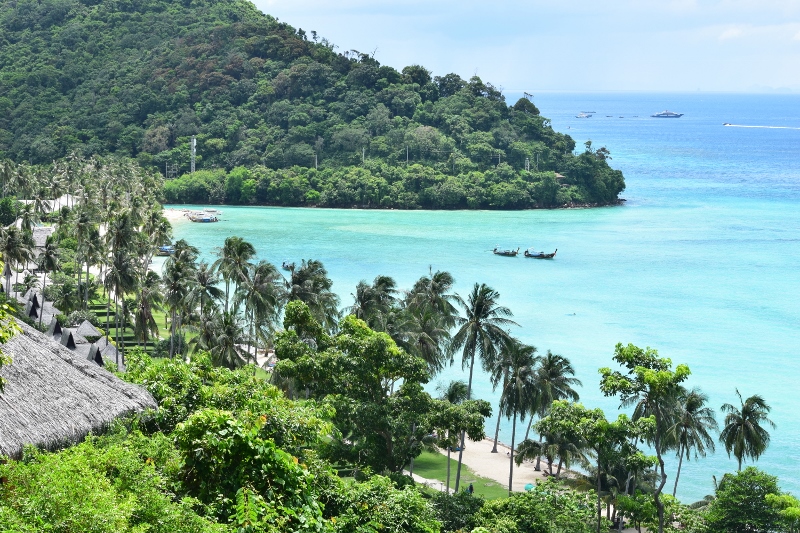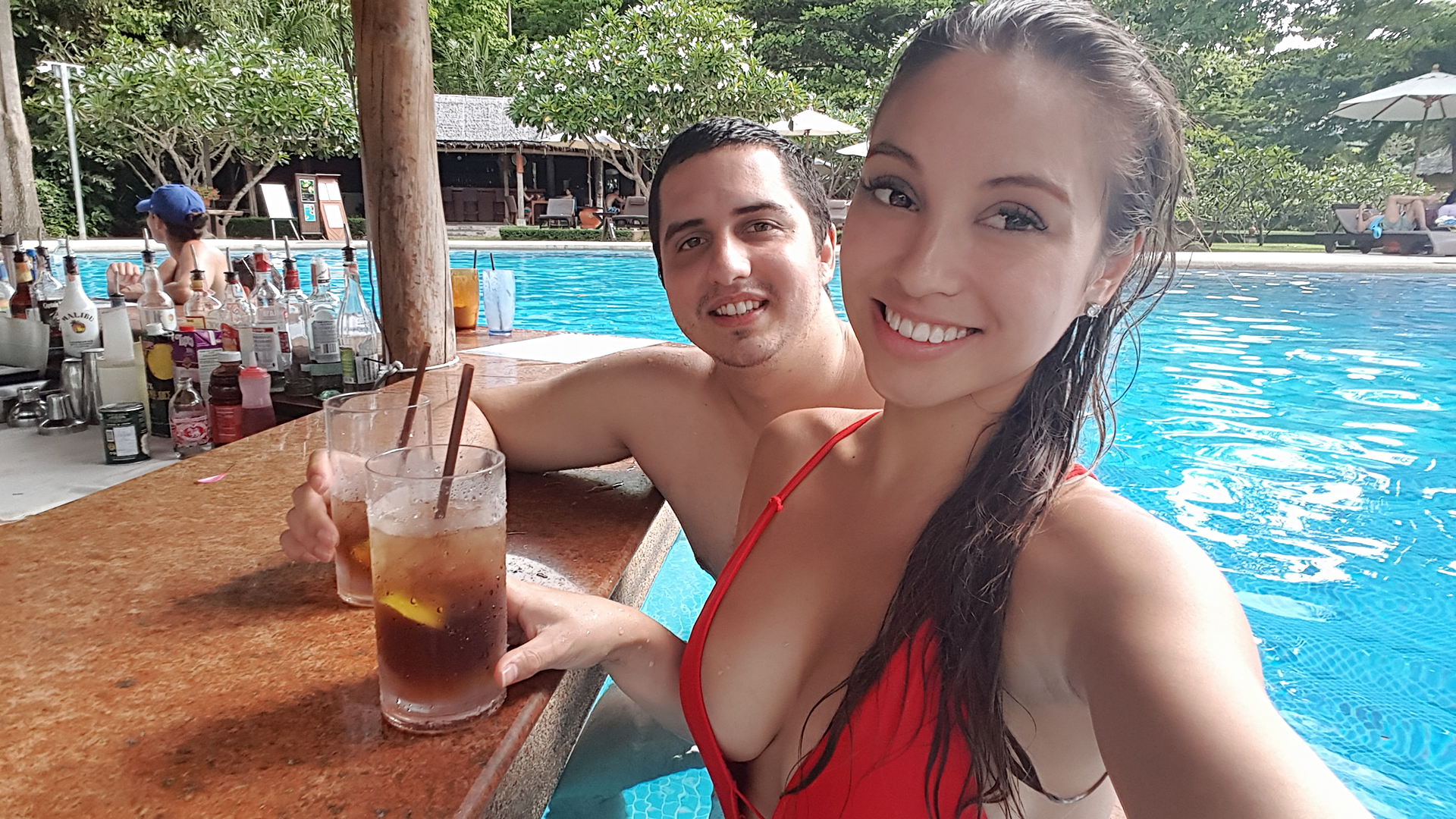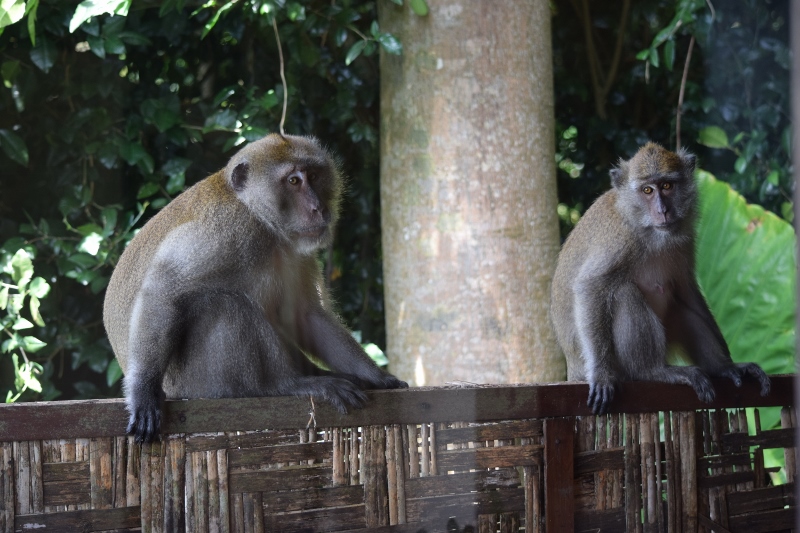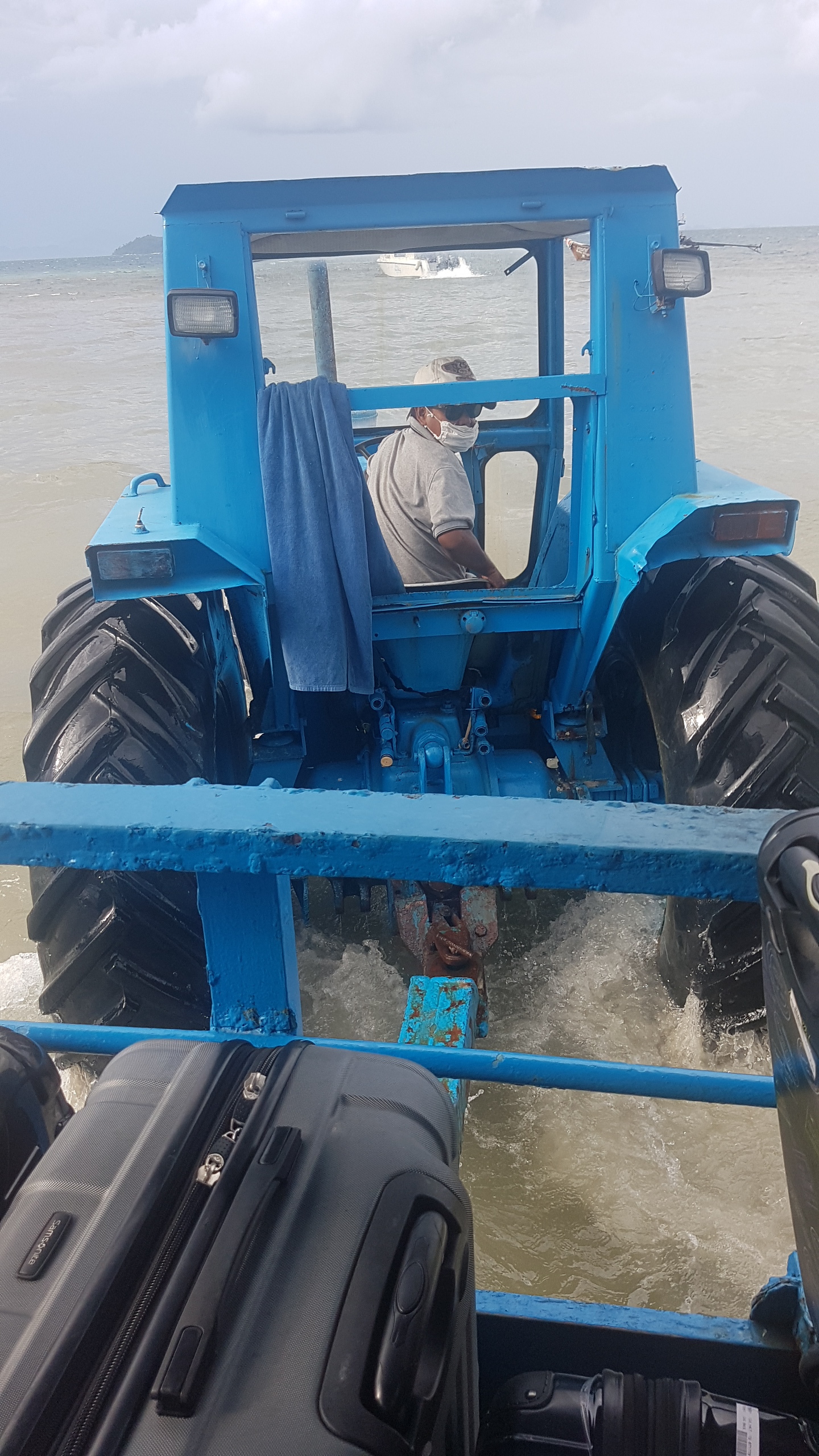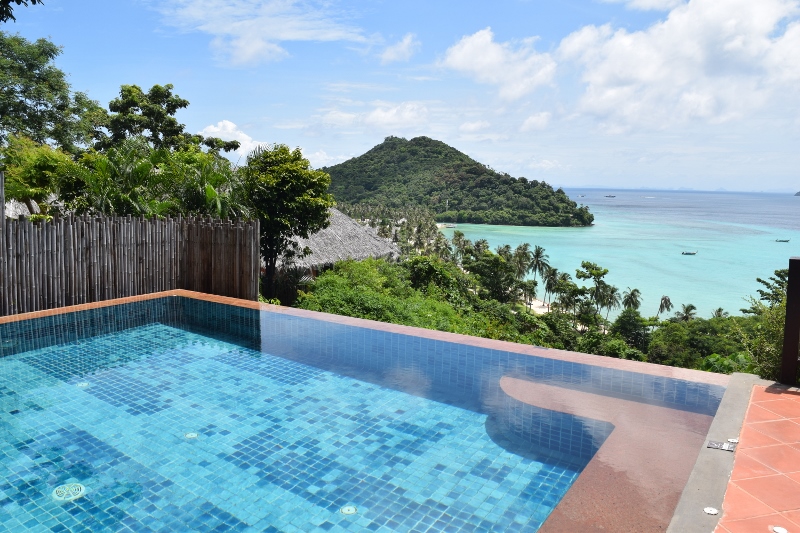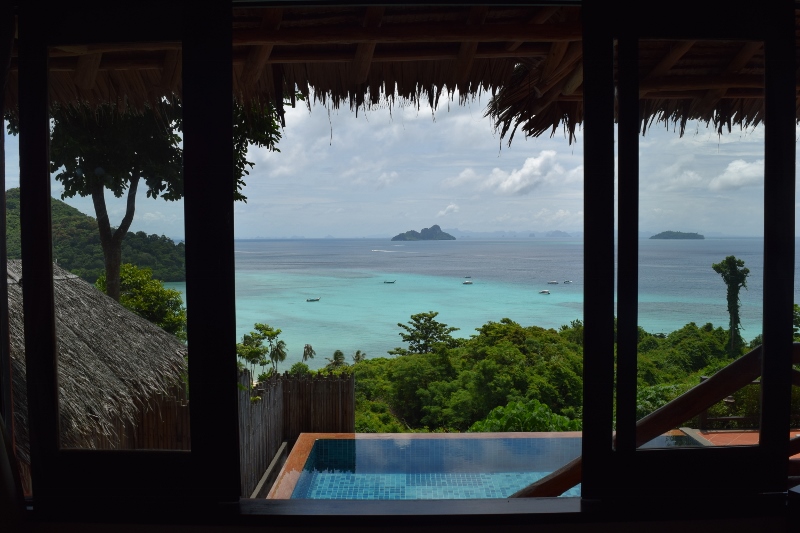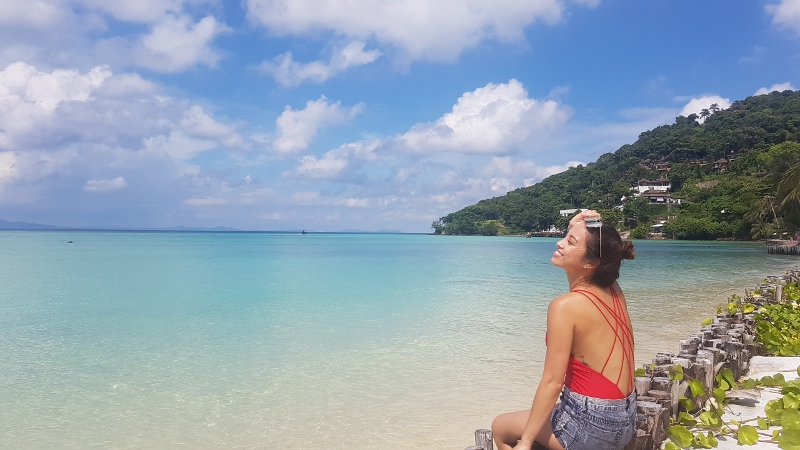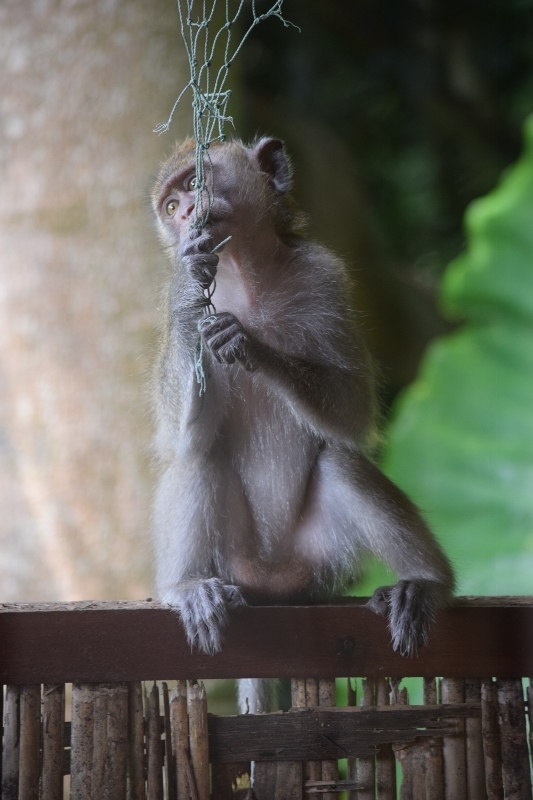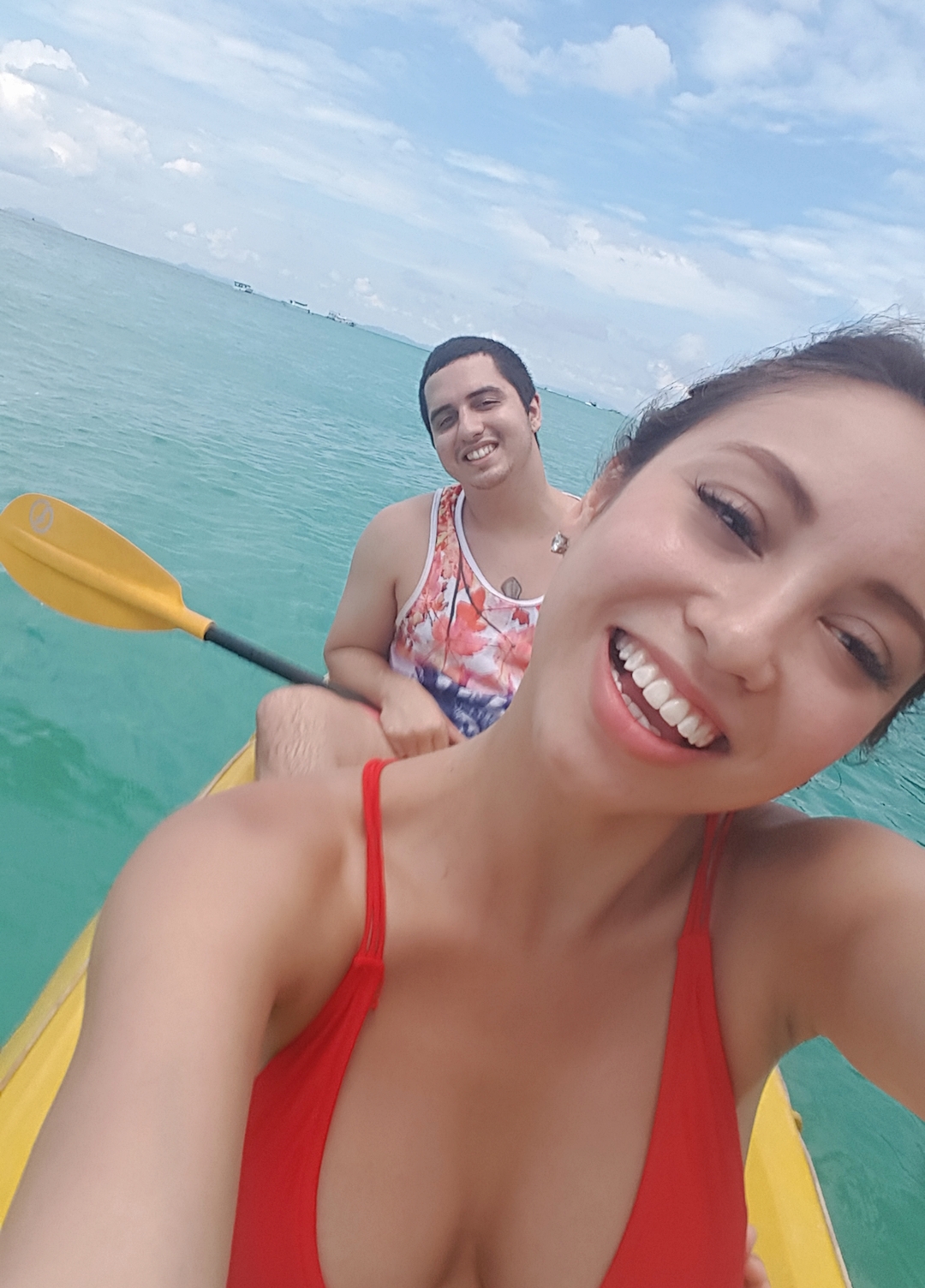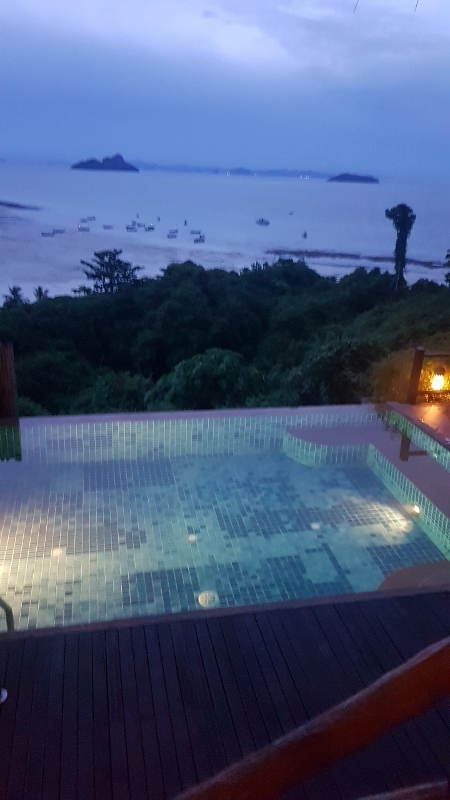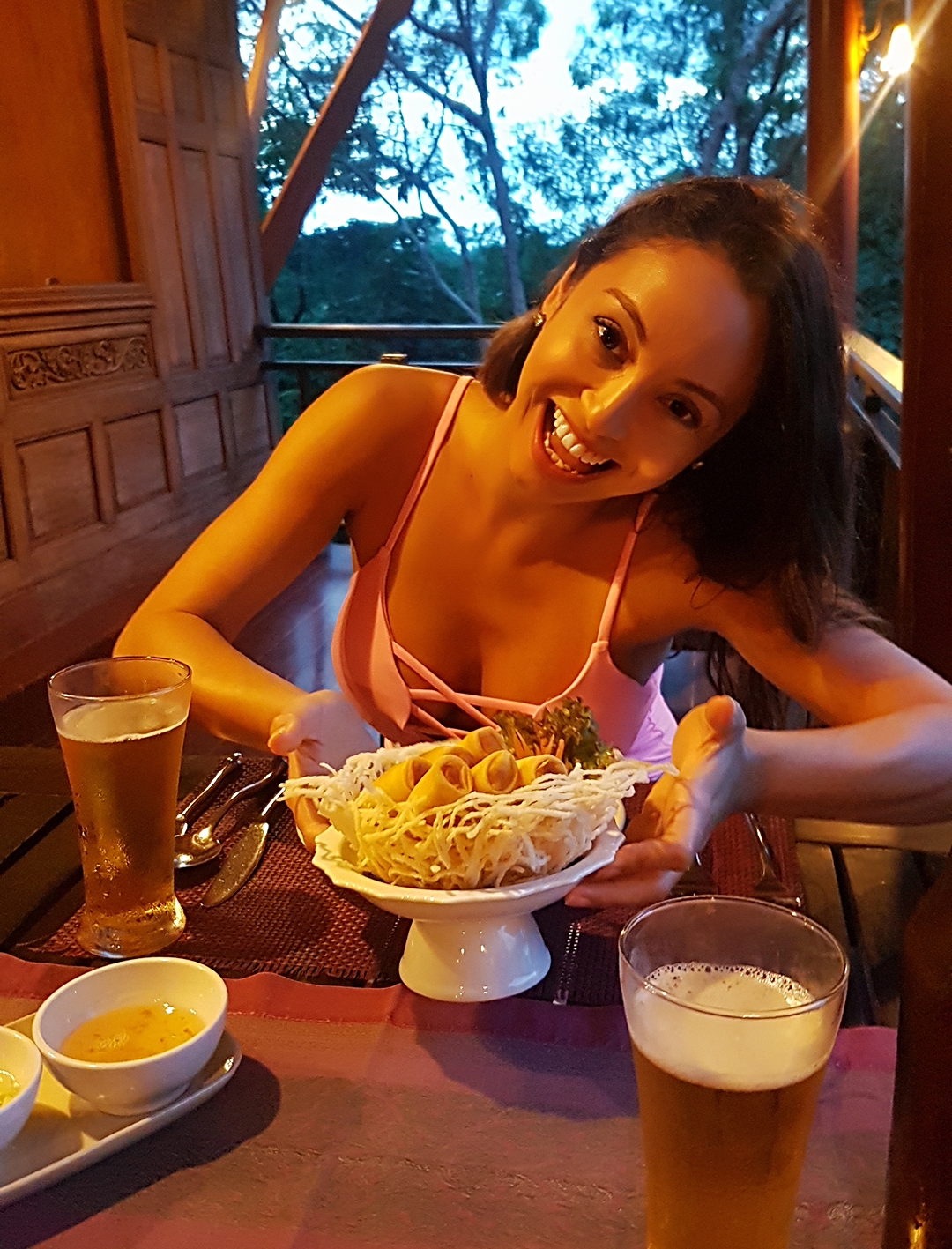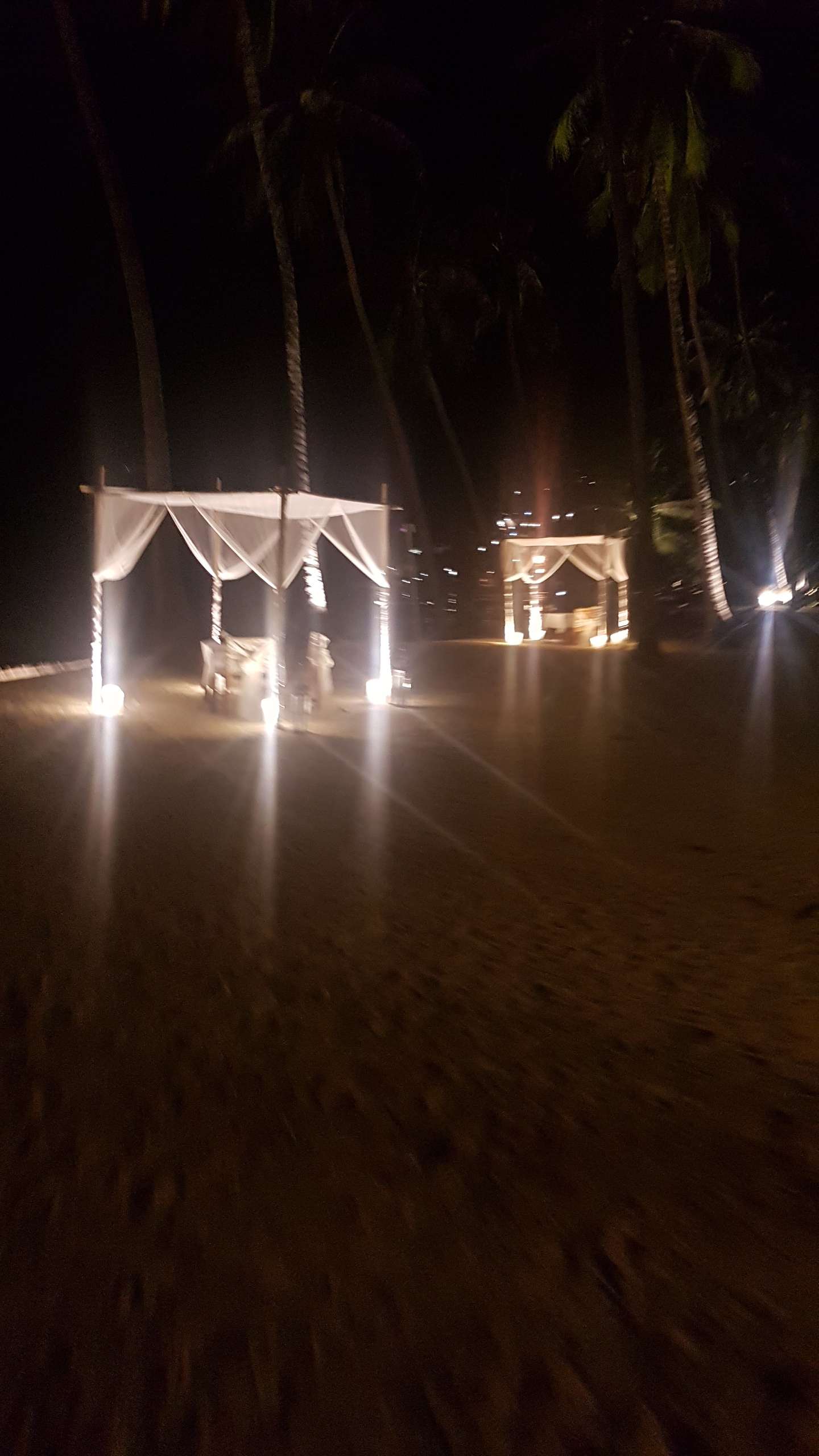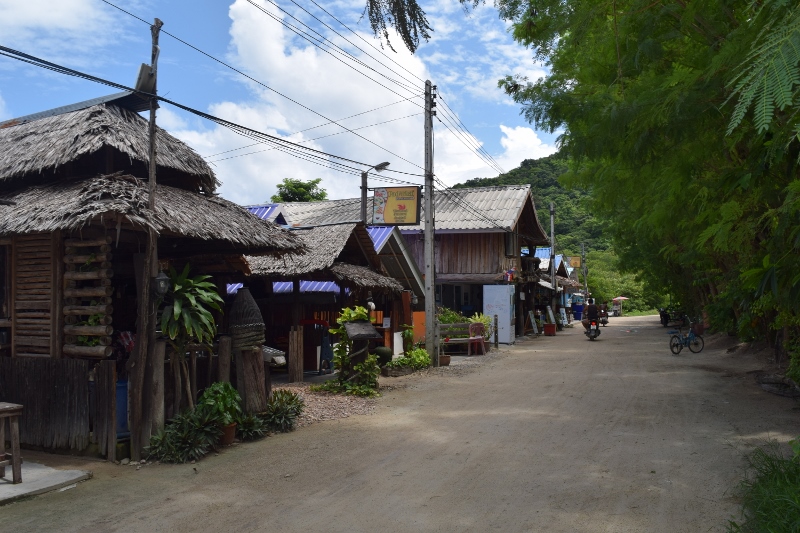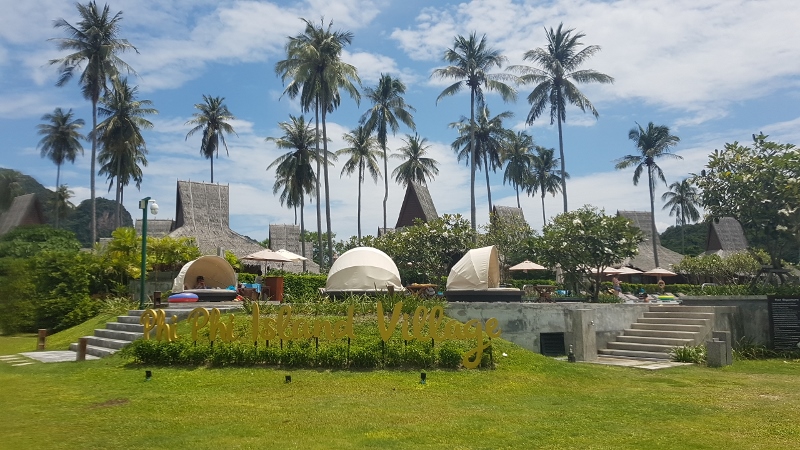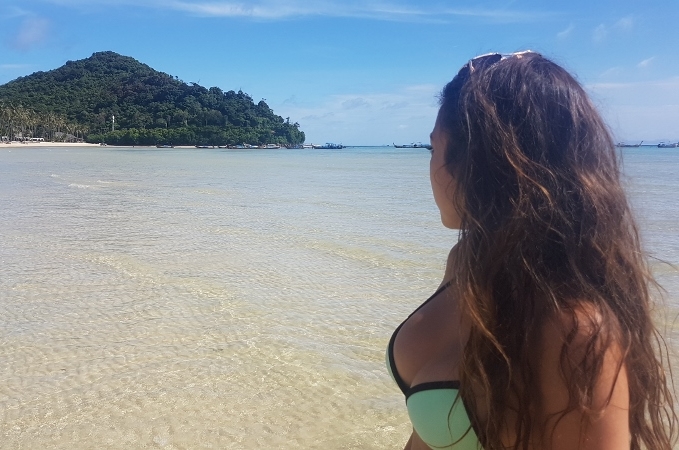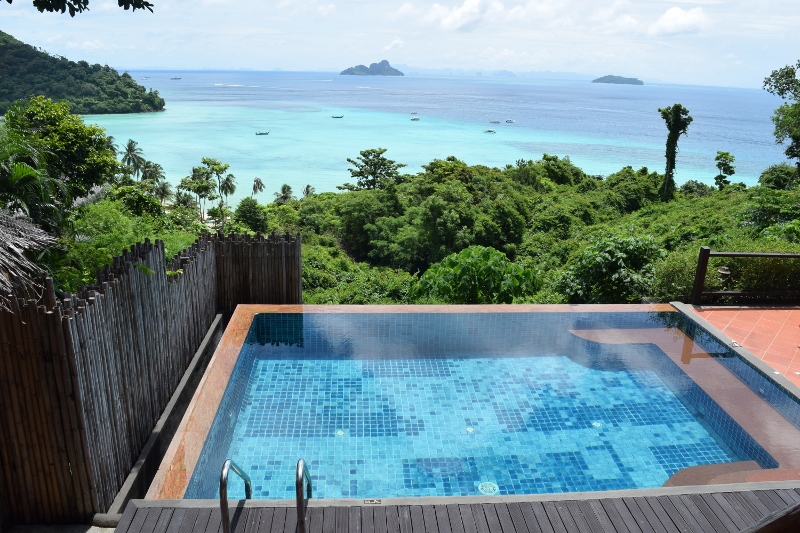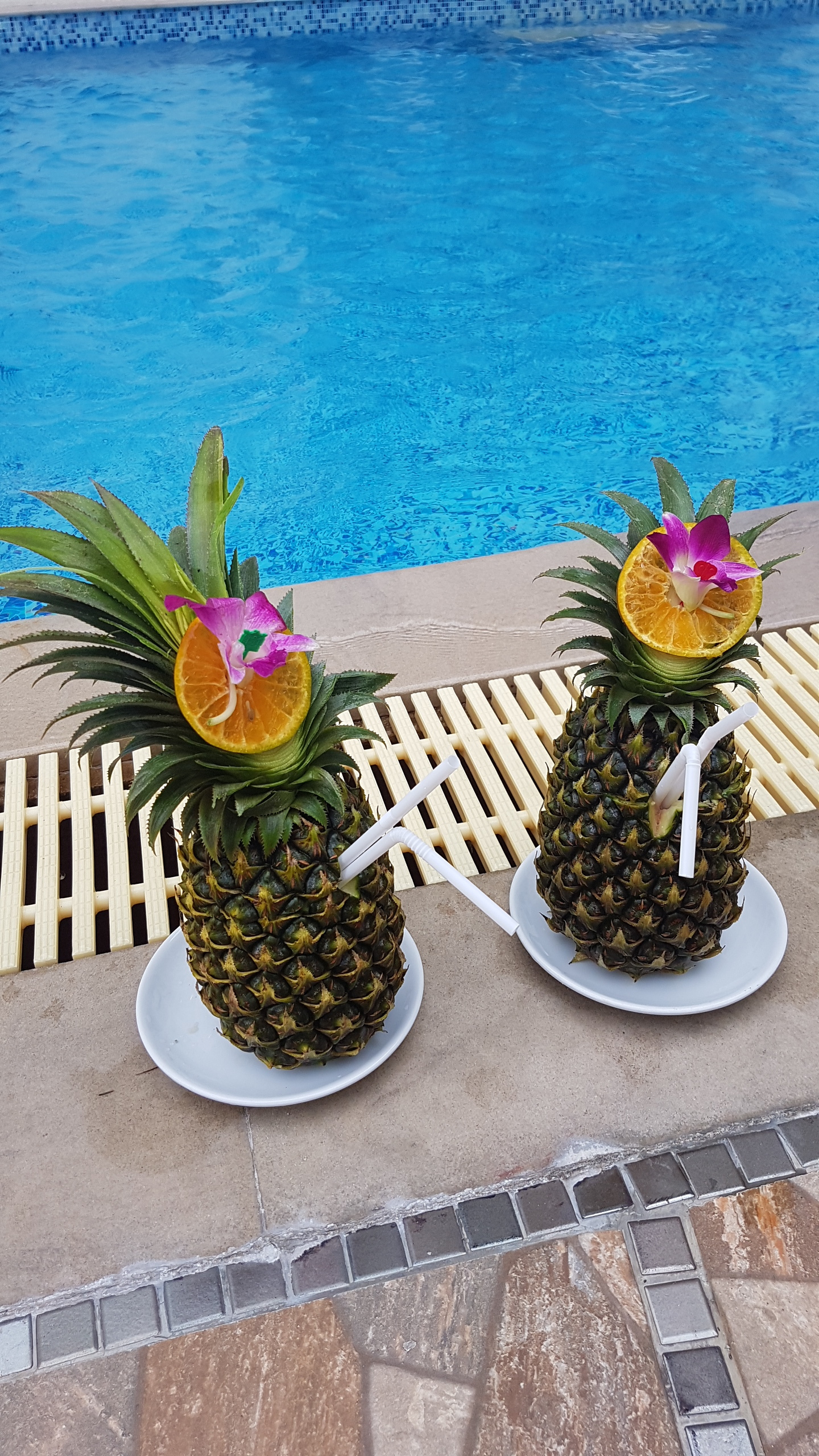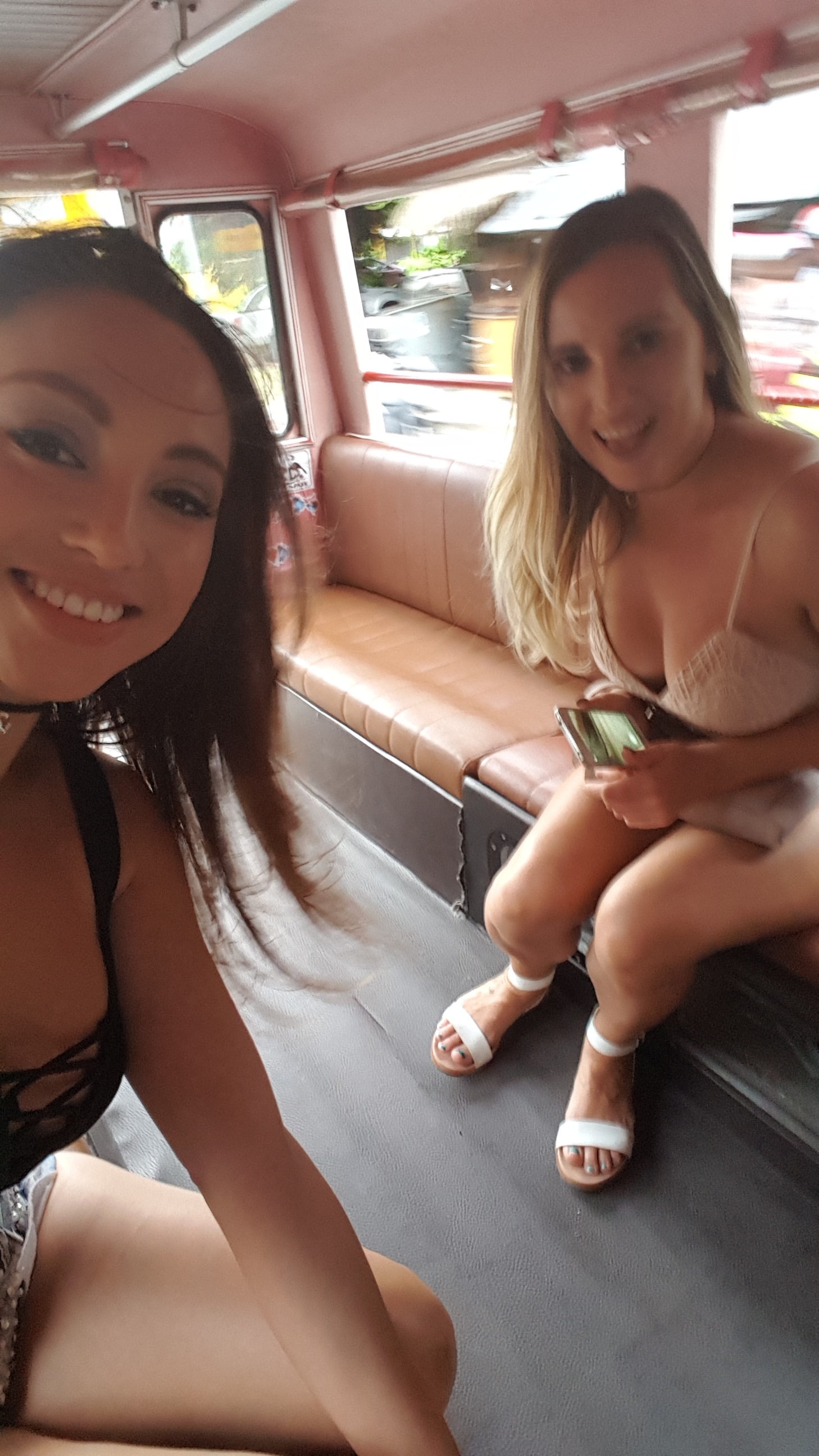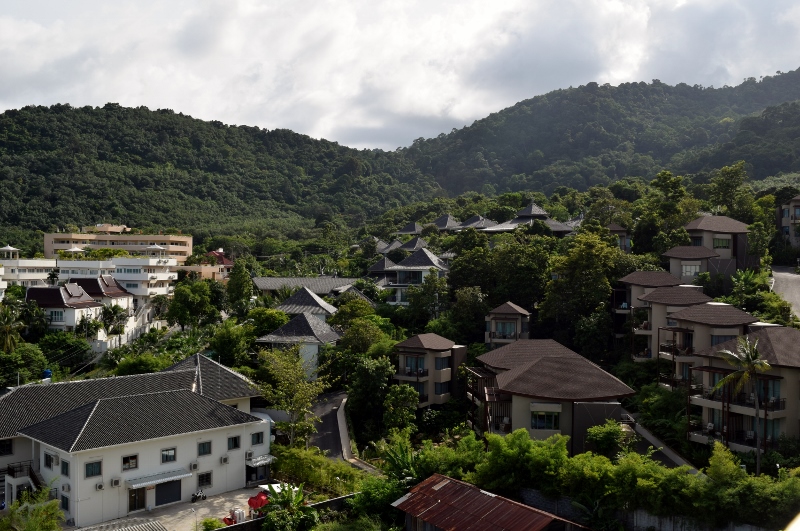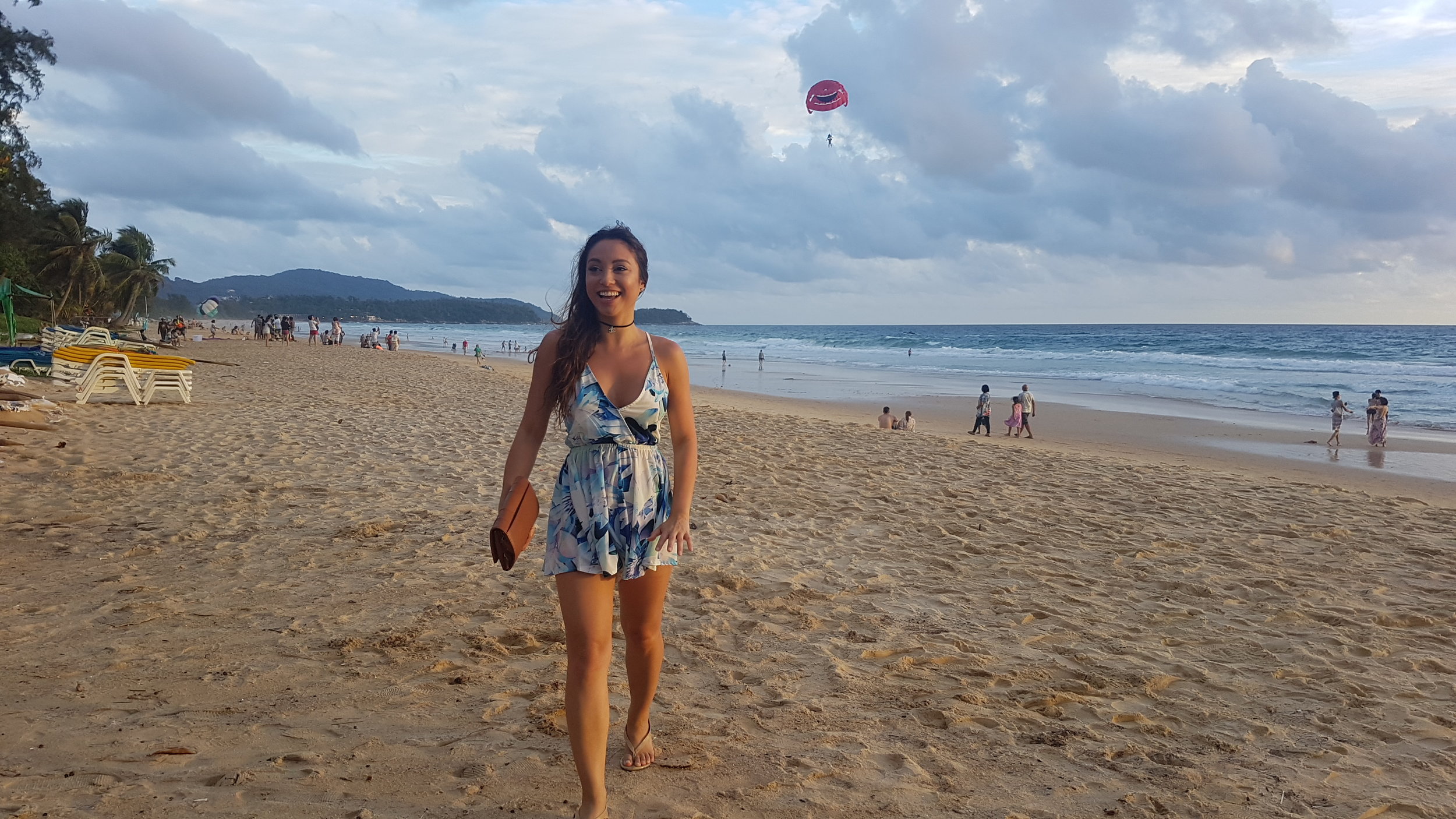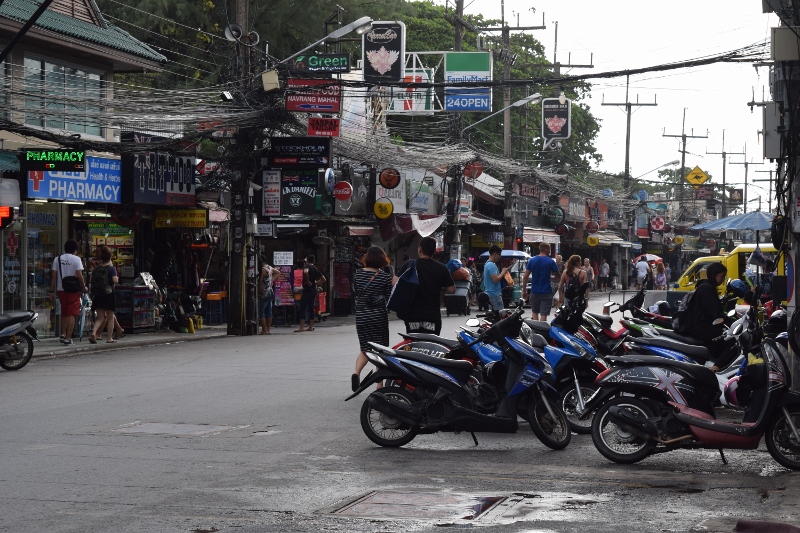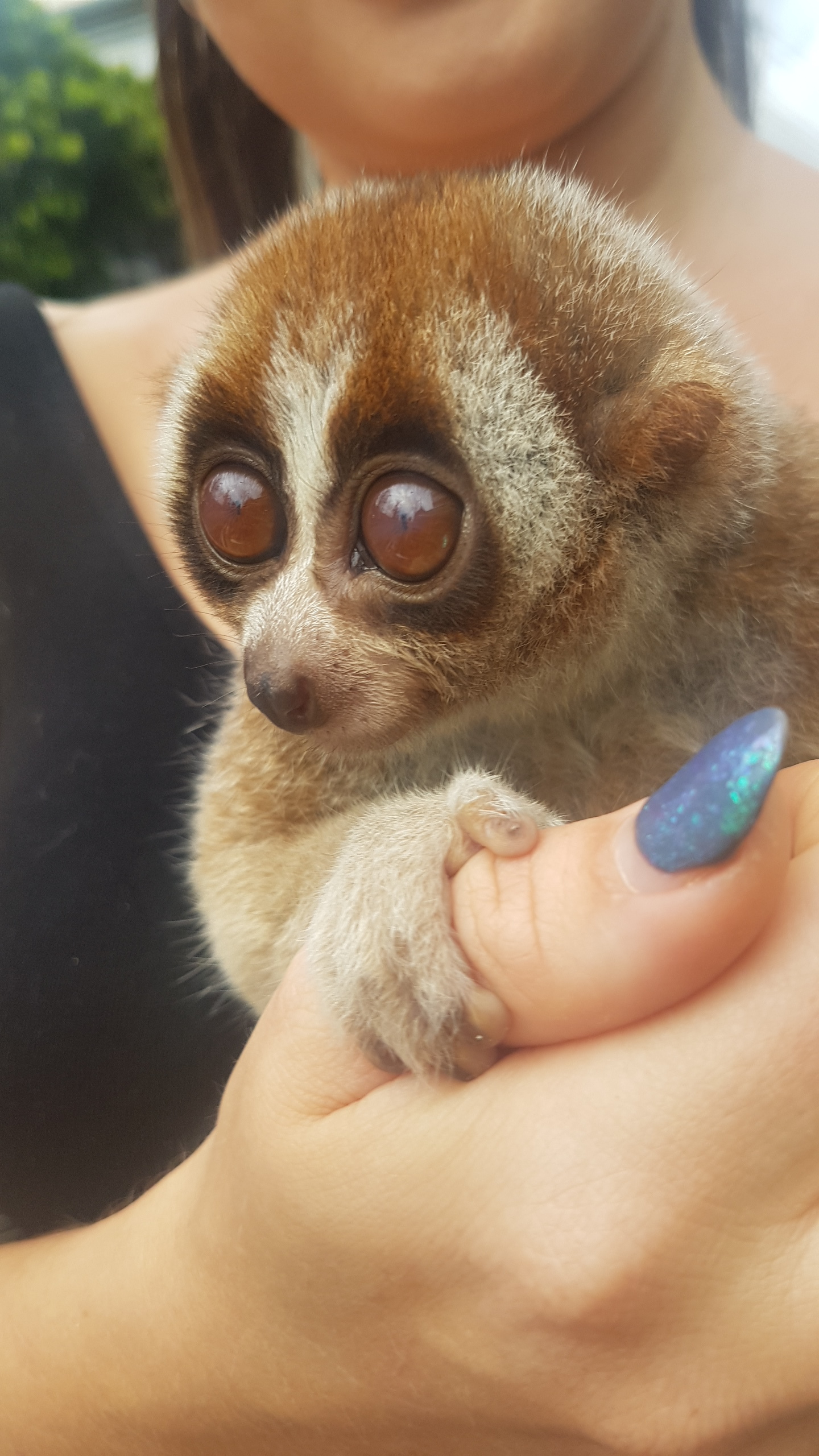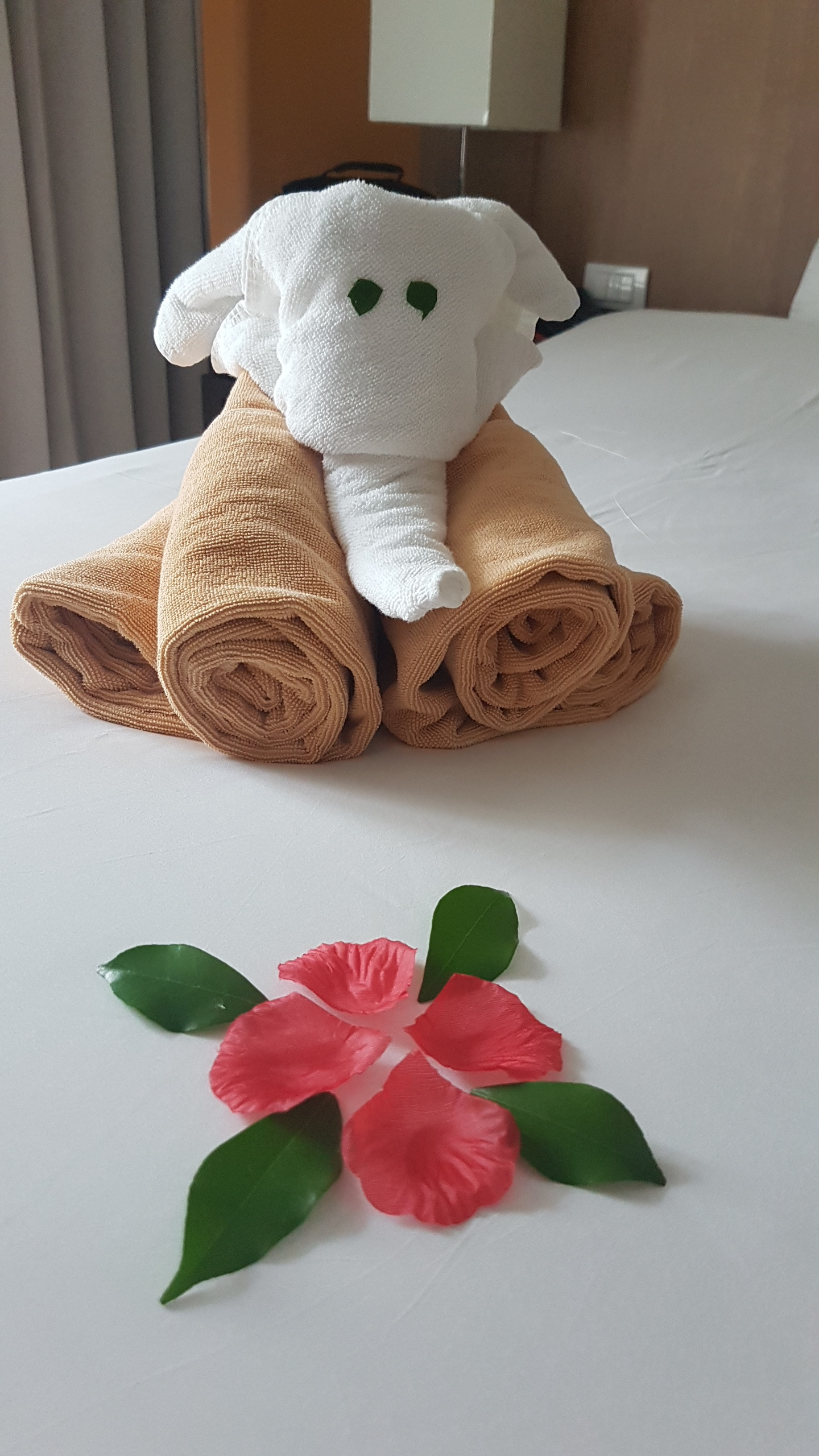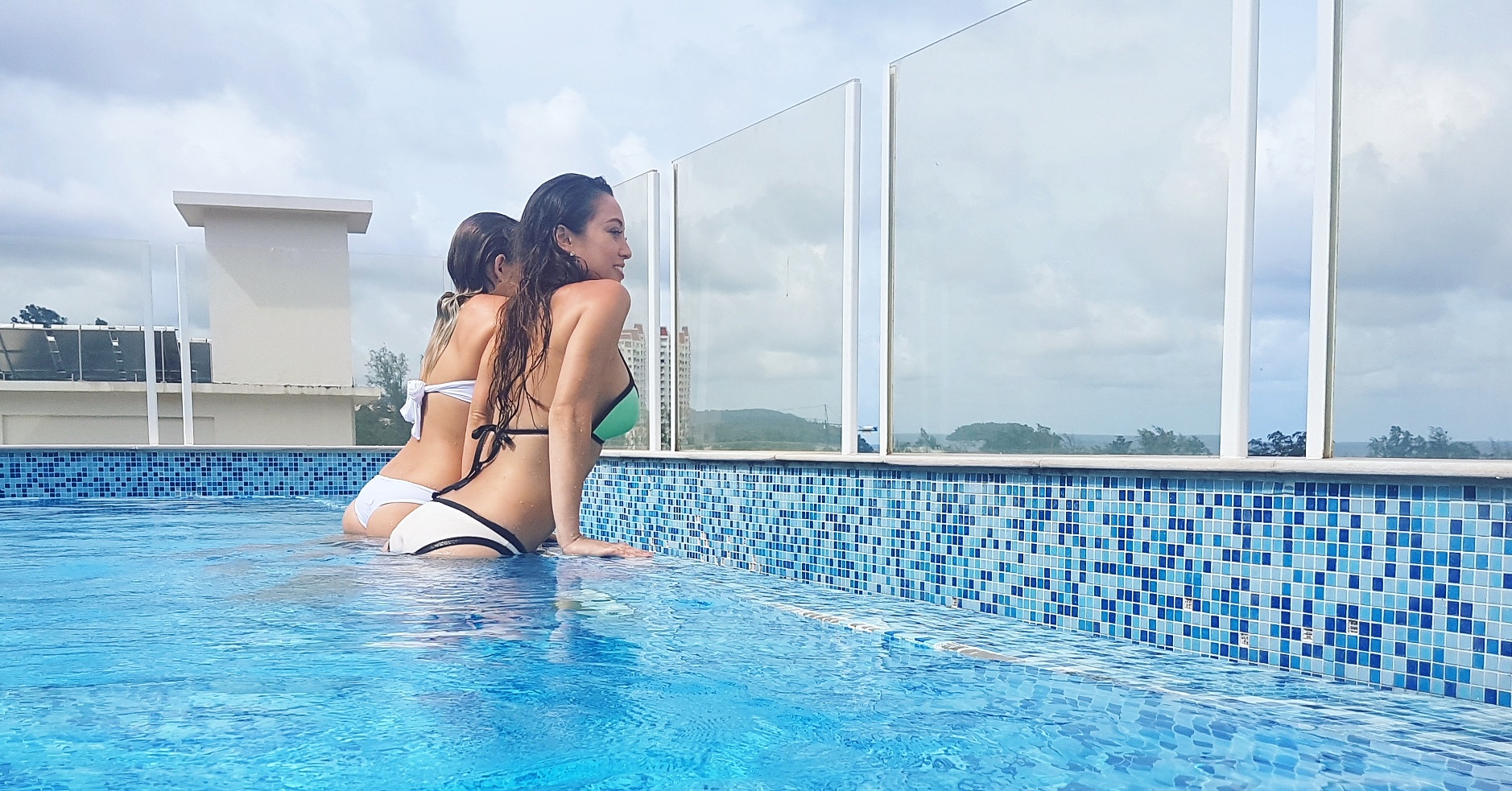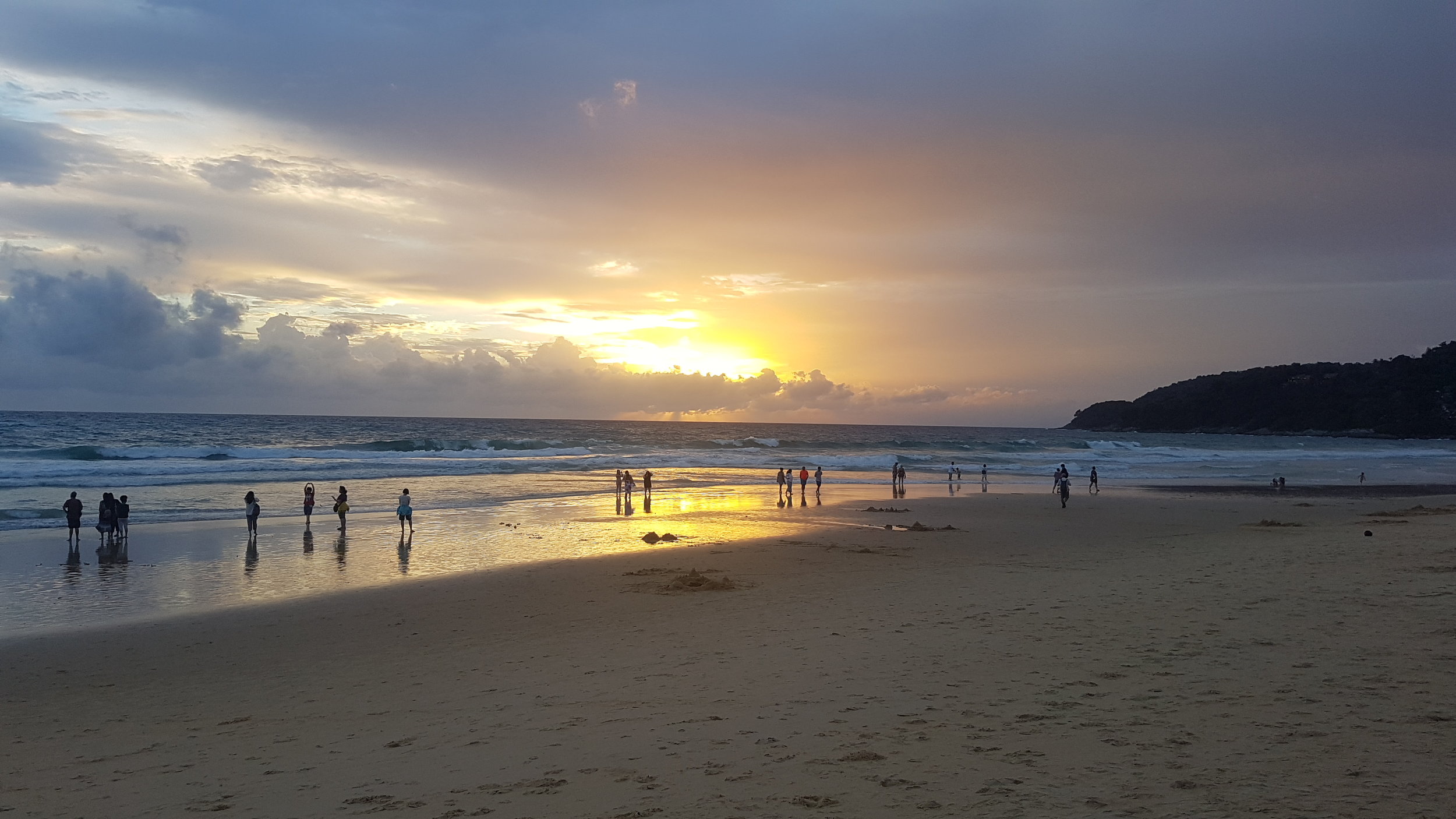My cheeky little monkey boys and best friends while staying in the jungles of the Philippines!
Main street in Daet. Scooter anyone?
THE BUS RIDE TO DAET
After spending almost two days in Manila we were ready to make the long, overnight bus trip to Daet. In the past I have been terrified of this ‘ghetto’ bus terminal where large groups of loitering men without shirts, cigarettes hanging from their mouths, leer at you and try to wheel your luggage 50m (for a price) or try to solicit tricycle rides, while loud rap music blares from speakers above. Fortunately, I was only travelling with my mum, so we weren’t obvious tourists plus with my new found adventurous confidence I didn’t feel as nervous as previous visits. We waited hours before finally boarding and Mum managed to get two free seats at the back of the bus. Just before I stretched out across the two seats and fell asleep I noticed a chubby faced, young man in the seat behind watching my every move. I clutched my bag closer as a safety precaution but told myself he was harmless. During stages of my sleep, you know the kind where you are still half awake but too tired to respond I felt someone stroking my hair. Due to lack of human affection from my prior two months of travel, I told myself I was just dreaming. After our last stop I fell asleep sitting, only to wake with a hand carefully splayed around the top of my head as if someone was trying to perform voodoo of extracting thoughts from my brain. I quickly jolted and despite the bus being very dark, I noticed the chubby faced man’s arms were draped over both sides of my seats, his faced wedged between the seats. He retracted them slightly and asked, are you okay? I said nothing and clutched my cat pillow, eyes wide for the rest of the trip. When it was finally his stop and the lights came on, he stood in the isle awkwardly staring at me and said goodbye as if we had somehow developed some sort of friendship. I quickly ran to Mum at the back of the bus to explain what happened and she came to sit with me for the rest of the bus trip. Prior to Nepal the bus trip from Manila to Daet was the worst bus ride I had experienced. I had been dreading knowing I would have to eventually make this trip but was pleasantly surprised that after experiencing long bus trips on the roads of Nepal that were so rocky it felt like you were on a boat in the middle of an angry ocean, this overnight trip on the windy but somewhat solid roads was easy peasy.
A REGULAR NIGHT OUT
Jungle living, coming up next!
Daet is not a place you’ll see many tourists but luckily, I blend in, sort of. It’s obviously not an easy province to get to but we were only in Daet as a stopover before making another trip to ‘bundok’ a somewhat secluded village within the jungles of the Philippines where my Mum grew up. During our stay in Daet, we ate throughout the day and drank Primavera (local brandy) in the evening. After receiving some unsolicited, slightly drunk and R-rated advice on how to get a husband and make babies from my Aunties and extended relatives, my cousins asked if I’d like to join them at a local bar. Feeling the effects of the Primavera I happily accepted the invitation and we were on our way. The first bar we drank red horse and more relatives joined but as the evening continued some of the males announced they were going to watch the bikini finals…yes, they hold bikini competitions at 10pm in Daet (the humidity must keep the girls warm). Others were hesitant so a smaller group of us moved onto another bar. As we smoked shisha and drank apple flavoured Red Horse one of the staff members came over to our table, leaned in and said something to my cousin and his friend. In a heartbeat they were up and at their feet quickly muttering that someone had a machete. The music stopped, there was shouting, my cousin’s friend suddenly drew a handgun from his pocket and pointed it at the suspect, a warning shot was fired as they shouted at him to put down his drawn weapon. He didn’t listen so another warning shot and more shouting. I should probably mention, my cousin and his friend are both policemen in the Philippines although off duty, are well known in the area. I was also fairly intoxicated by this time so this all seemed very exciting and not a frightening experience had it would have been if I were sober. Eventually, they had to tackle the suspect, my cousin removed the large black machete, putting it back into its shield while the other restrained him until a wagon and a pair of on duty police officers turned up and took him away. At this stage I wasn’t sure what would happen, but after I reassured my cousin I was fine and we all downed some more red horse, the night continued. It’s more fun in the Philippines!
JUNGLE LIVING
Some local children collecting pili nuts in old coconut shells.
Following a very squished but air-conditioned, one-hour van ride we were suddenly dropped on the side of the road where a few local street stores and people loitered, not really doing much just lazing around, watching the road, talking to one another, drinking, smoking and / or grazing on food. My cousin was there to meet us with his motorbike, but we had too much luggage to fit on the back of one motorbike, so we ordered two more and were on our way down a dirt, rocky path. As we rode through the jungle I had never seen my mum so happy and carefree throwing her hands in the air as she sat on the back, Rnb music blaring from the motorbike. It was an exhilarating feeling sitting on the back of a motorbike, wind in my hair, as we drove deeper and deeper into the jungle and the place my mum grew up, a life and childhood completely unlike my own and what would be a very humbling and eye-opening experience. Some relatives had described jungle living to me as primitive, but I had already done my time in the mountains of Nepal so this would be a piece of cake!
Coconut farm life!
It took a few days before I settled into jungle life, but my daily routine would go something like this, I’d wake up at around 6.30am to the sounds of people talking (landscapers and/or coconut farmers) and/or 90s karaoke music and singing playing from a house at the bottom of the paddock (never too early for Karaoke). If you’re up in time, you can purchase fresh fish and/or meat from men riding bicycles with cooler bags attached along the rocky, dirt paths. After a coffee and cartoons (yes, you can get cable TV in the jungle), or mostly just when I felt like it I would set off for work in the yard, helping mum to dig up the soil and plant patches of grass or I would continue painting the exterior of the house. I took a break when I wanted, had something to eat when I felt like it, chatted and played with all the children hanging around, worked at my own pace and finished when I felt I had done enough for the day, it was a feeling of freedom I had not experienced in my working life in Australia. There were always people around, dropping in and out, children playing in the gardens surrounding, collecting and bringing me pili nuts, guavas, bananas or whatever other fruit they could find. There would always be someone cooking up a feast in the kitchen or people would drop in with bowls of food or to lend a hand, or even just to watch TV. Later in the day my cousins would drop in selling amazingly, delicious, freshly cooked Turon (a jungle banana, rolled in sugar, covered with a spring roll wrapper and deep fried) for 5pesos each or $0.12 each. Finally, when the sun was starting to set we’d make ourselves a cup of tea and take a break. At the end of the day my hands and feet were grubby, I was tired from working in the sun, but I also felt so satisfied. Relatives might bring over another bowl of food from their dinner to share and after a delicious dinner and refreshing shower, I would lay on the couch and watch cable movies and TV shows until it was time for bed. Everything was so simply, relaxed, stress free - I felt so much peace and happiness within myself that I hadn’t felt before.
Two of six brothers, including a set of twins!
BREAD ROLLS FTW
Fun in the sun!
There is a large grassy area at the bottom of The Chalet that is soon to be rice terraces. For now, children (mostly boys around the ages of 6 – 10) gather after school with an old red bike and take turns riding it and pushing each other around the grass, making stick bridges to ride across and using large leaves as weapons to hit each other. Each afternoon they will call out to me, ‘Ate Sarah, Ate Sarah!’ (pronounced Ah-Tay, it’s a sign of respect to address a female that is older than you) until I eventually come out onto the balcony to wave at them. The only English phases they seemed to know were ‘I miss you’ or ‘I love you’ so they would yell these out from the grassy field along with other Tagalog until I made my way down where they would bombard me with questions in Tagalog and laugh at my English responses. One day I didn’t feel like making the trek down the hill as the previous visit I had slipped on my way back up and cut my palm open. Instead I yelled in response “Halika Dito” (come here), without hesitation, six boys came scrambling up the hill, taking their shoes off and climbing onto the balcony like a bunch of monkeys hanging off the railings and jumping up and down in excitement, slapping each other on the backs affectionately. I asked them if they were hungry and offered some Filipino food, bihon (noodles) but was met with indifference so I then asked if they wanted buttered bread rolls and you’d think I’d just offered them each a lifetime supply of ice-cream; they nodded and screamed yes, jumping up and down, crawling over each other to get to the bread rolls I had started buttering. They munched on their bread rolls excitedly chattering away in Tagalog and jumping from couch to couch while watching cartoons, still speaking to me in Tagalog I didn’t understand, not realising I had started a daily day care centre that would see the boys returning with all their friends up to three or four times a day for snacks and cartoons. They would wait for me to return if we went out during the day or follow me up the hill when I would try and get internet reception. Like most children, their clothes were dirty and torn and sometimes we had to tell them to go home and wash before they were allowed in the house, but they were the happiest children I’ve ever met, although greedy when it came to food, they rarely, if ever complained. None of them have phones or ipads, they play outside until the sun has set, running around, pushing each other along on the one red bike they share, making up their own games or playing things like leapfrog and tiggy. It makes me question the real benefits of technology and how it has affected humanity, human connectivity and development. I love these children so much and my heart is heavy when I think about how much I miss their constant and annoying need for my attention. My mum and I have just shipped off a massive box that will reach these children by Christmas full of teddy bears, chocolates, new and second hand (but in good condition) clothing and other bits and pieces. If you have anything you would like to donate, please contact me as we will be sending another box in the next few months!
I miss you all so, so much!!!
AFTERWORD
My beautiful pet cat in the Philippines, Beauty.
When I returned home it was like I had never left. Within a few weeks my trip felt like a long dream. I quickly became so far removed from my time overseas because I jumped straight back into the daily grind! But, I’ve taken a breath now and am slowly starting to find the balance between wants and needs and learning to work to live and not live to work. As my boy Biggie said, “mo money, mo problems”.
My beautiful pet dog in the Philippines, Bogart..
I had gone on this 3-month adventure to gain perspective, to find direction and meaning in my life. I was hoping it would be a life changing experience, but I didn’t know what that meant or how it would feel. I thought I might change instantly but it hasn’t happened like that. I am only now gradually noticing changes within myself as time goes on. Overall, I now feel more at peace with myself, I feel less caught up in the materialistic, online world; I seek less reassurance from social media and care less, in fact do not care at all, about the lives of social media influencers. I care less about what others think and am generally happier with my self-image. I’m more concerned with my own achievements without constantly comparing myself to others. I catch myself admiring the smallest things about nature or people that I once wouldn’t have noticed before and I stop and appreciate them or it. Every now and then I’ll be doing something simple such as having a warm shower, laying in my soft bed, flushing a toilet and I’ll get a warm fuzzy feeling and truly appreciate my life. I compare myself to others less and am genuinely happy for other people’s successes without letting it impede on my own. Finally, I’ve cemented what I knew all along, money doesn’t bring happiness, and I don’t need material items to be happy, that human kindness is infectious and giving without expecting anything in return is one of the most rewarding things you can do with your life.
So, as most of you know, I’ve now taken steps to ensure I can follow this path to happiness and ensure I live a fulfilling life full of kindness and giving. My travels and volunteer work certainly won’t end here, so remember to watch this space!
One final note, a massive THANK YOU to all those who have taken the time to read my travel journals and send emails and messages of encouragement, advice, queries and general praise, it makes my heart so full and proud and appreciative! Thank you!

